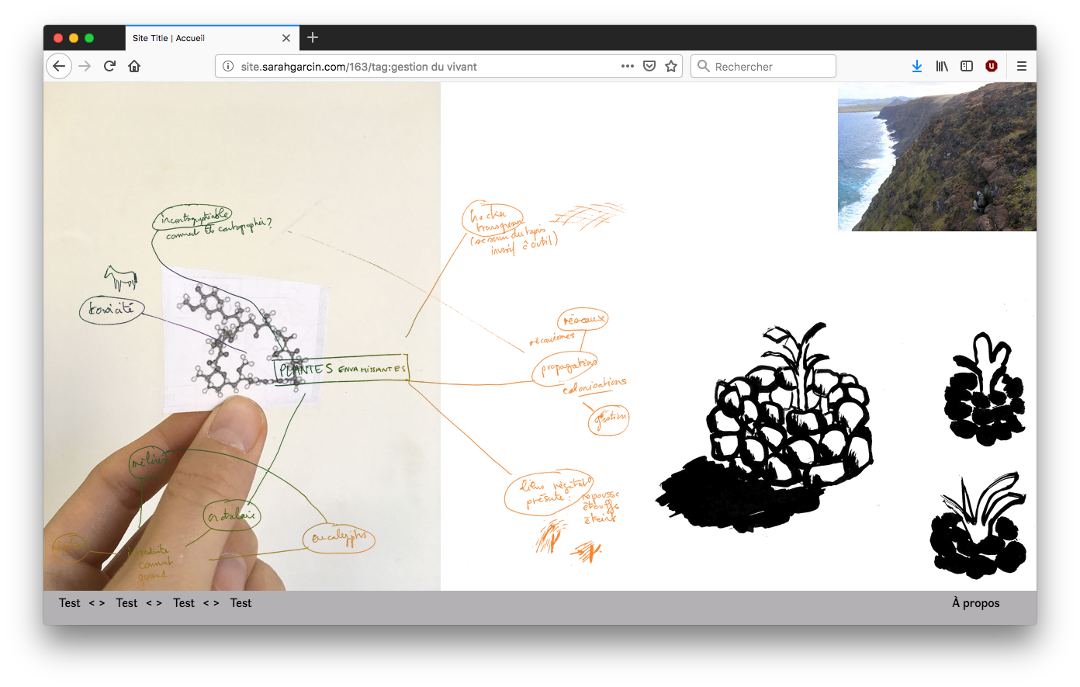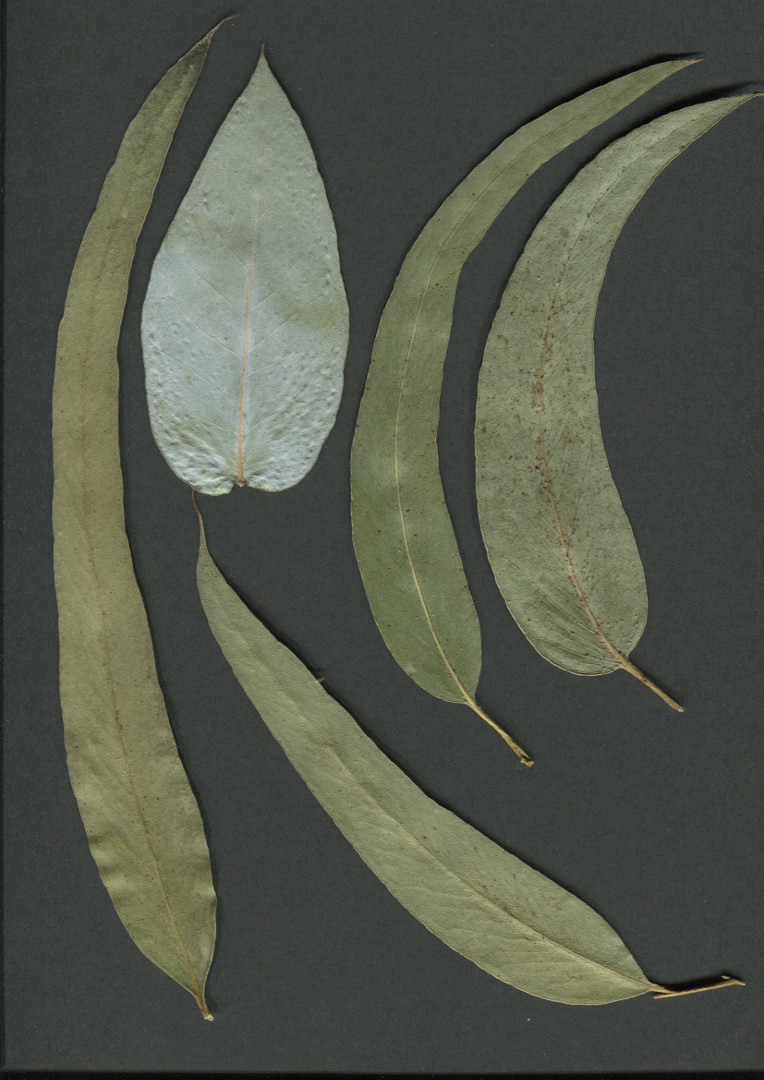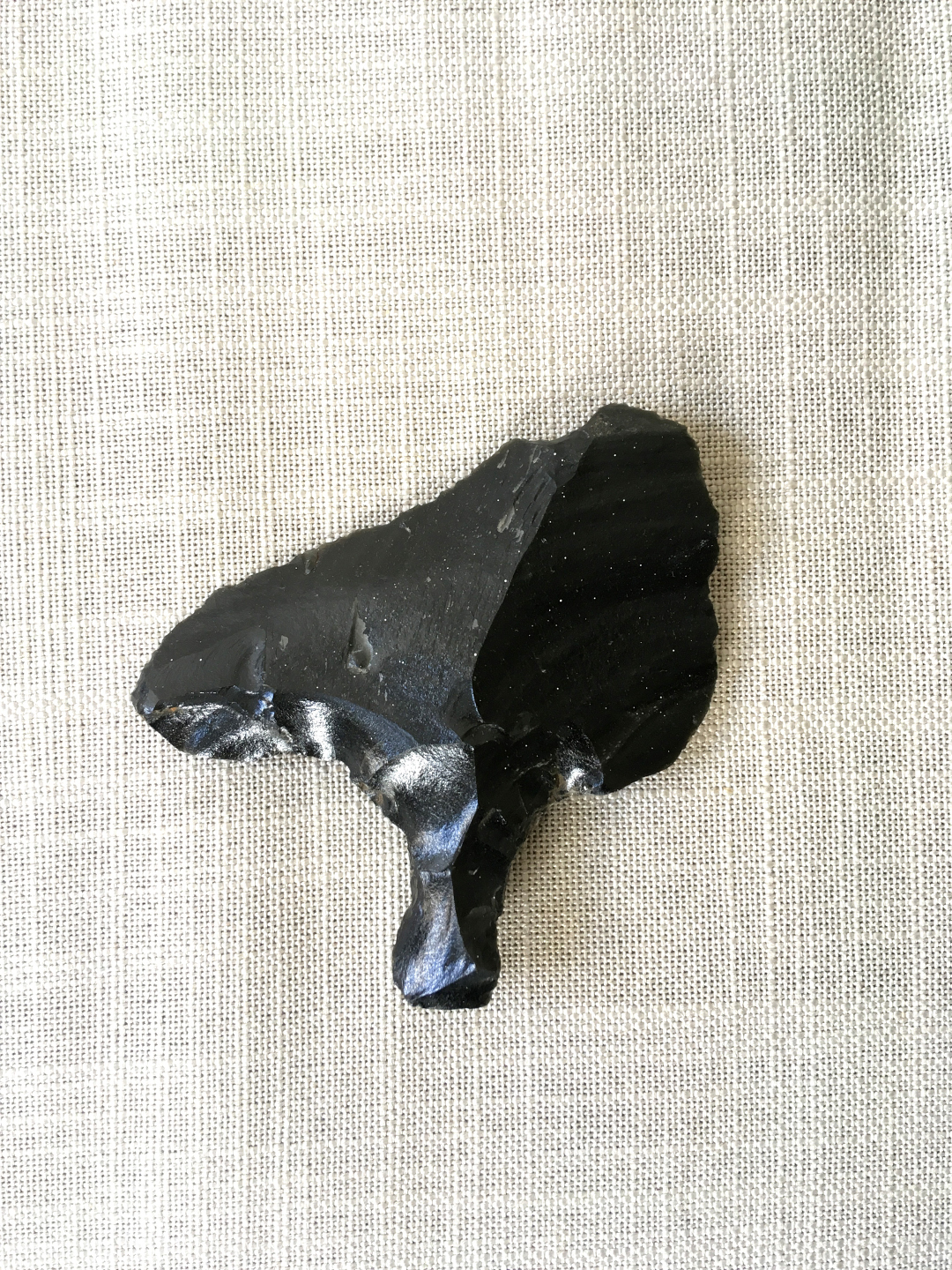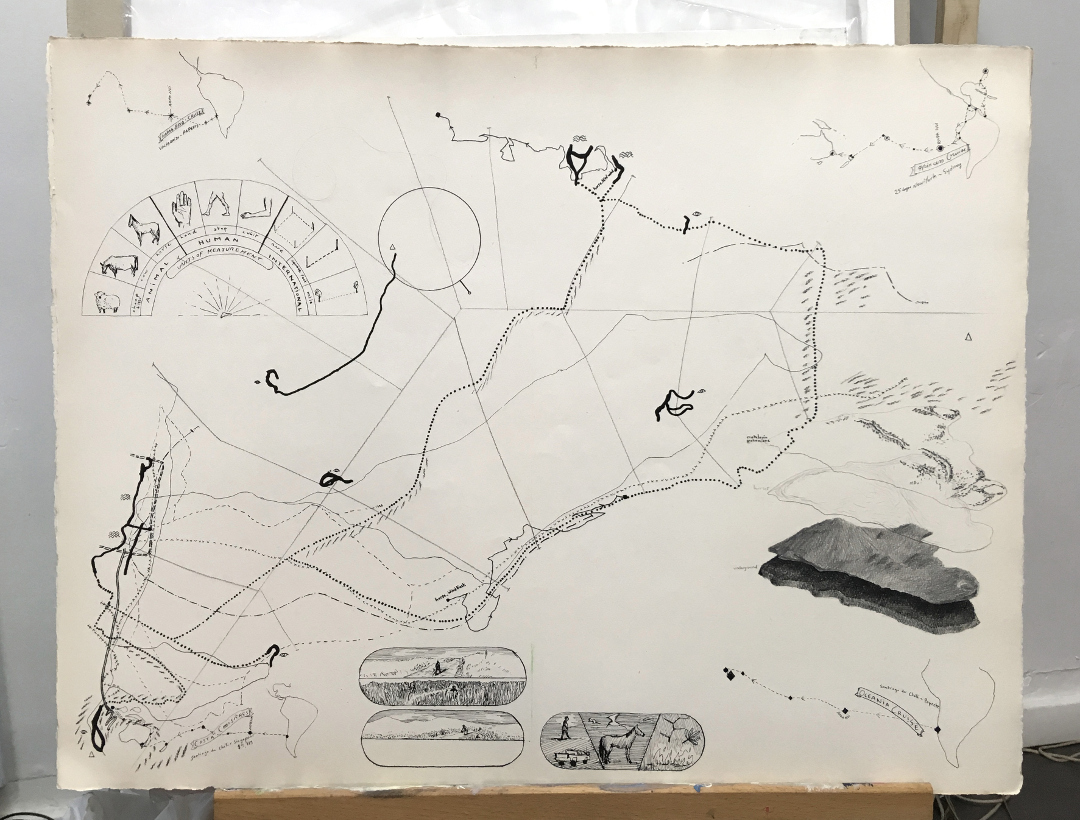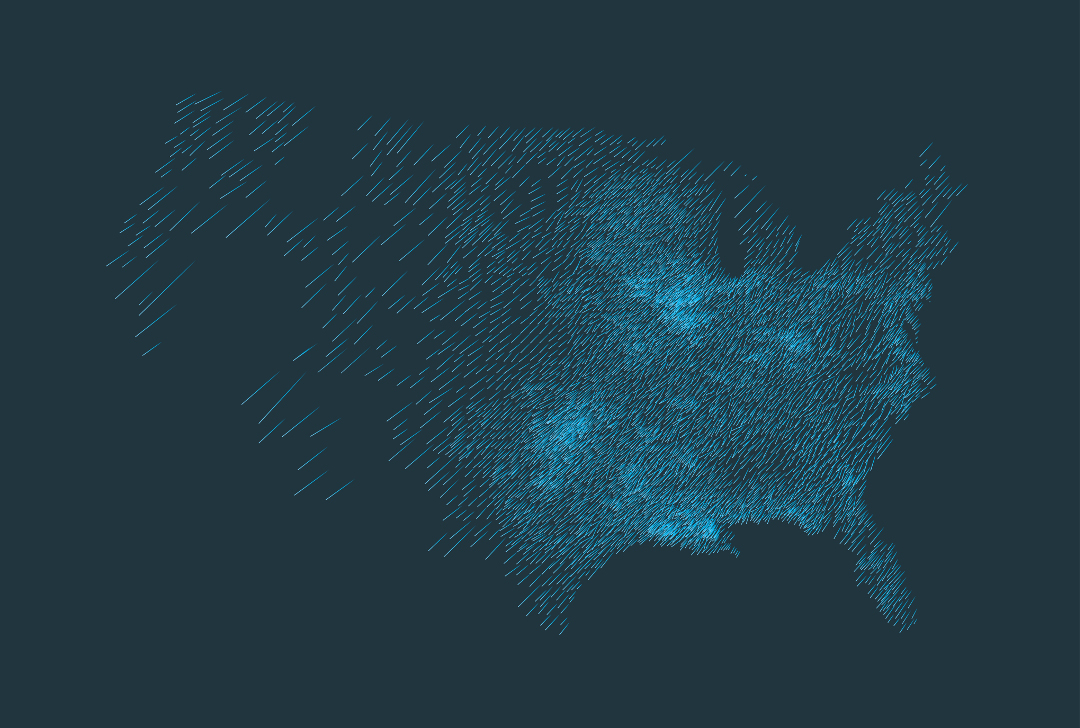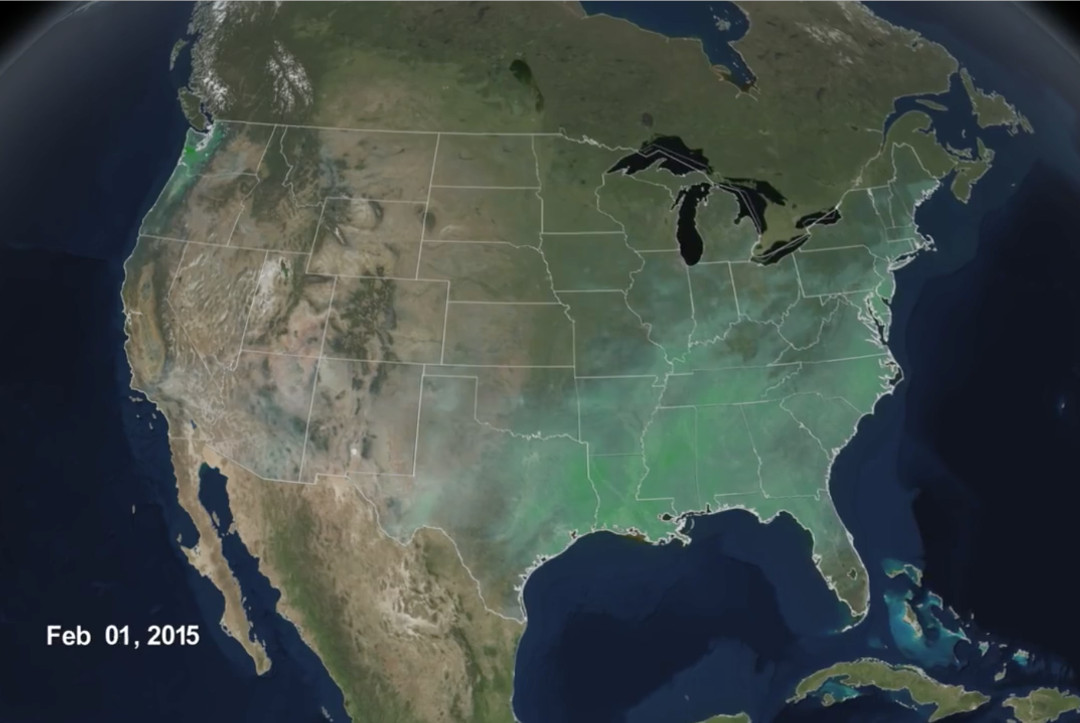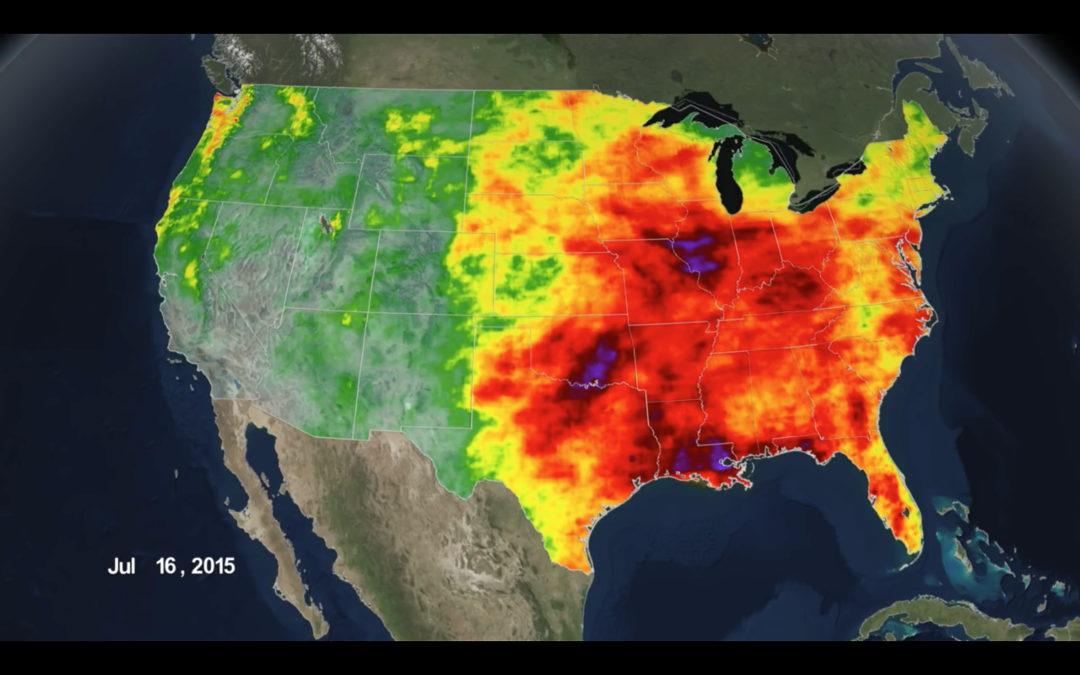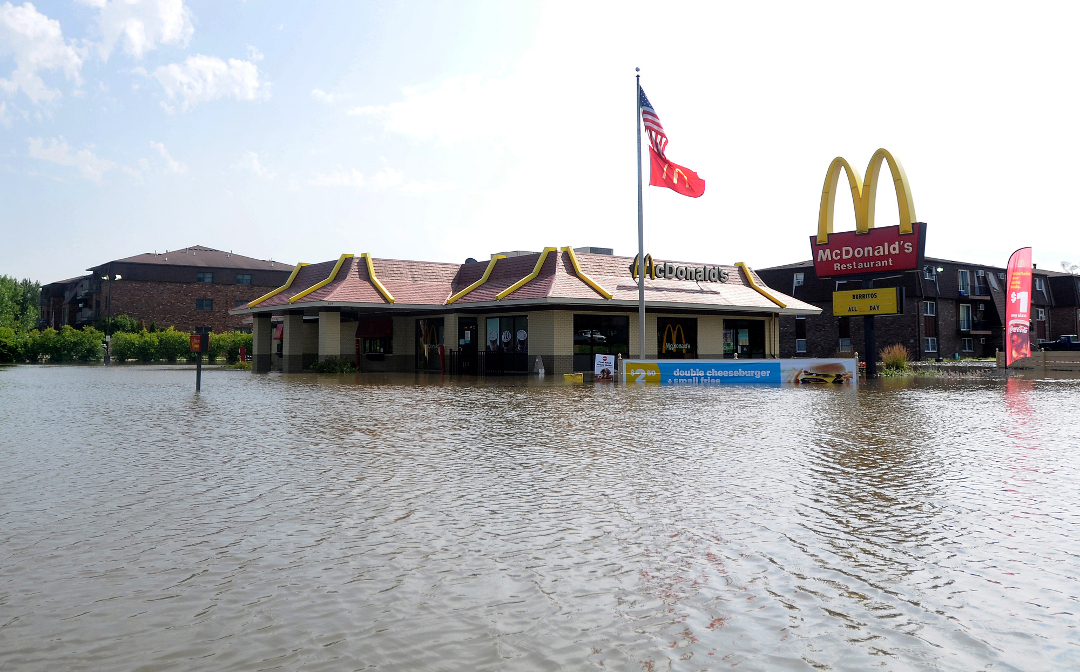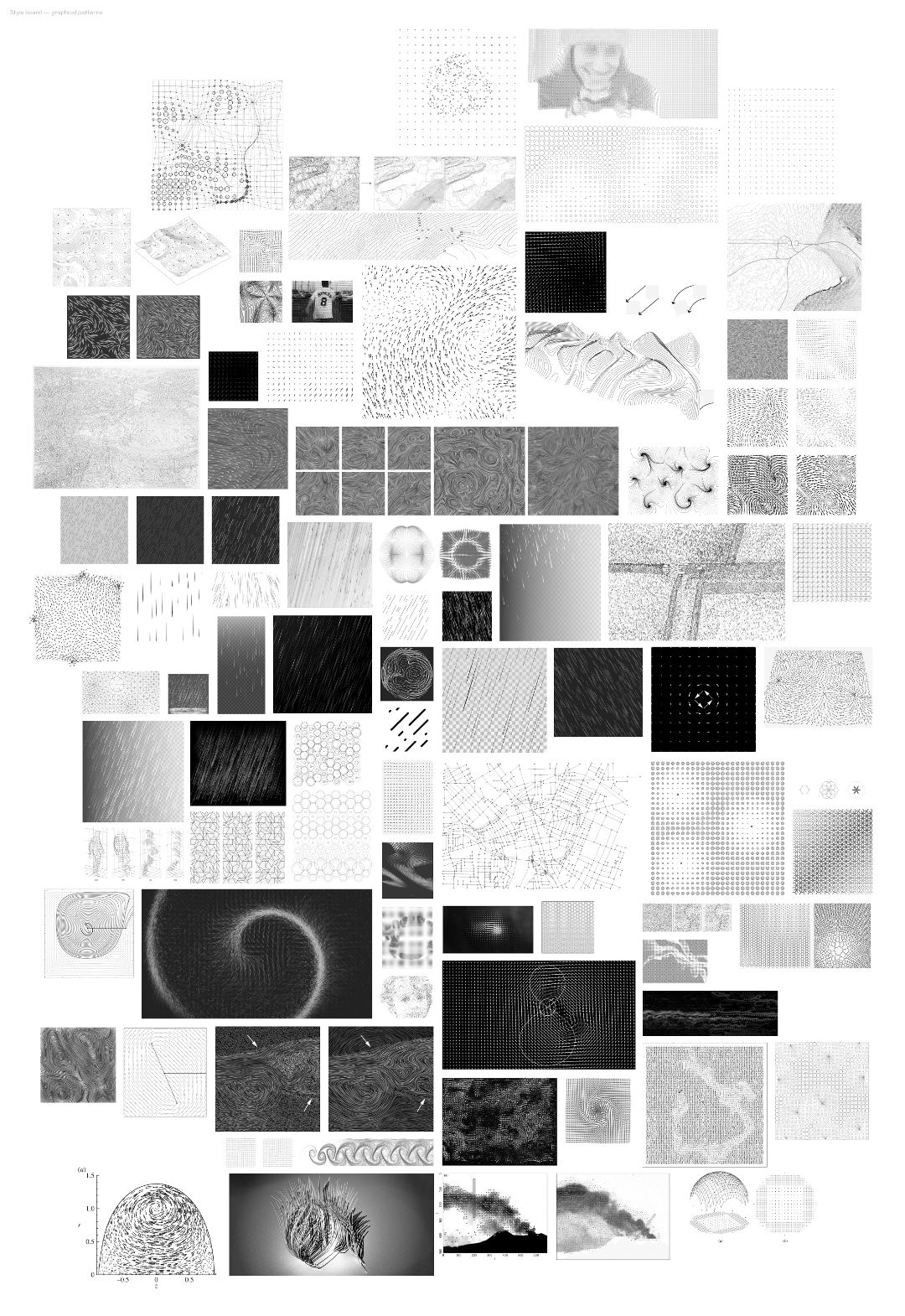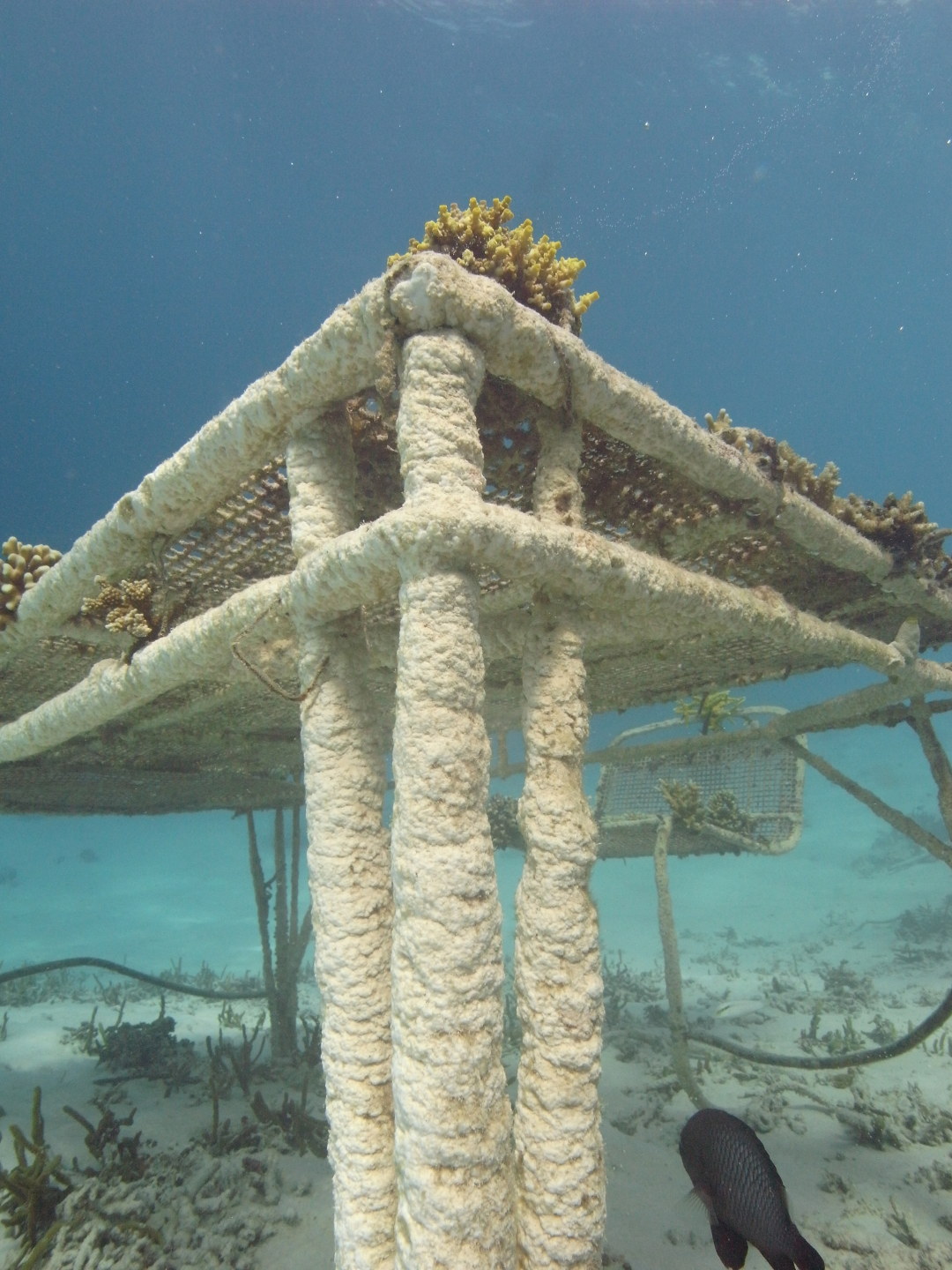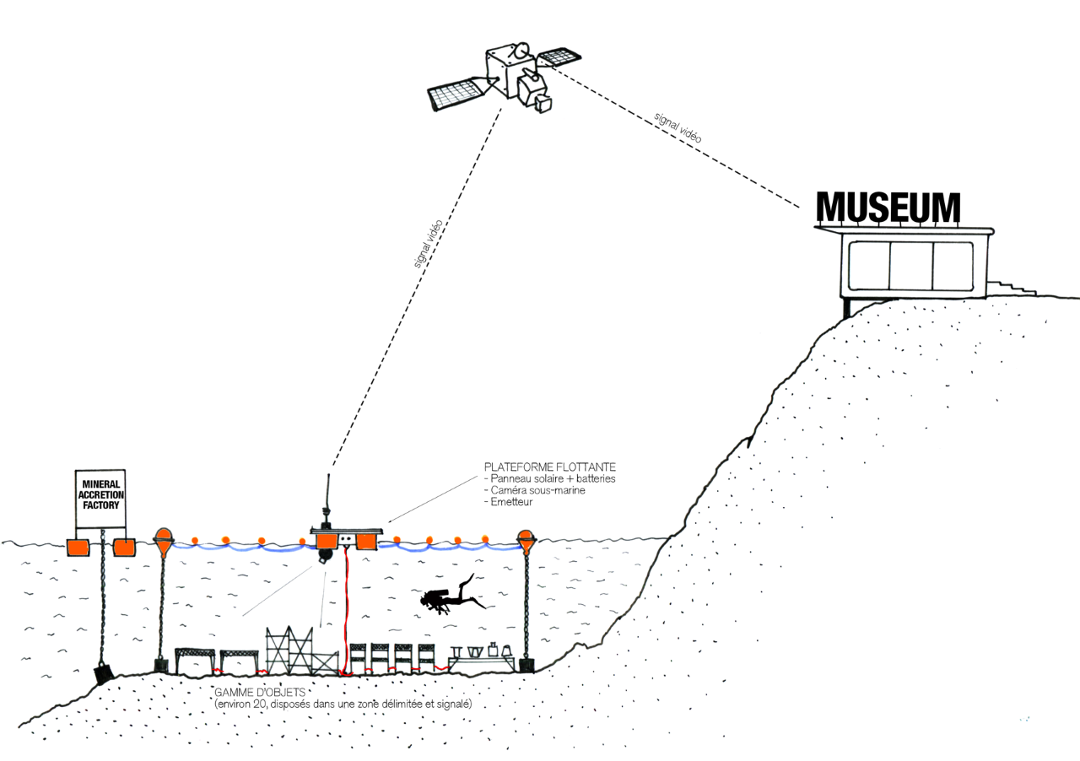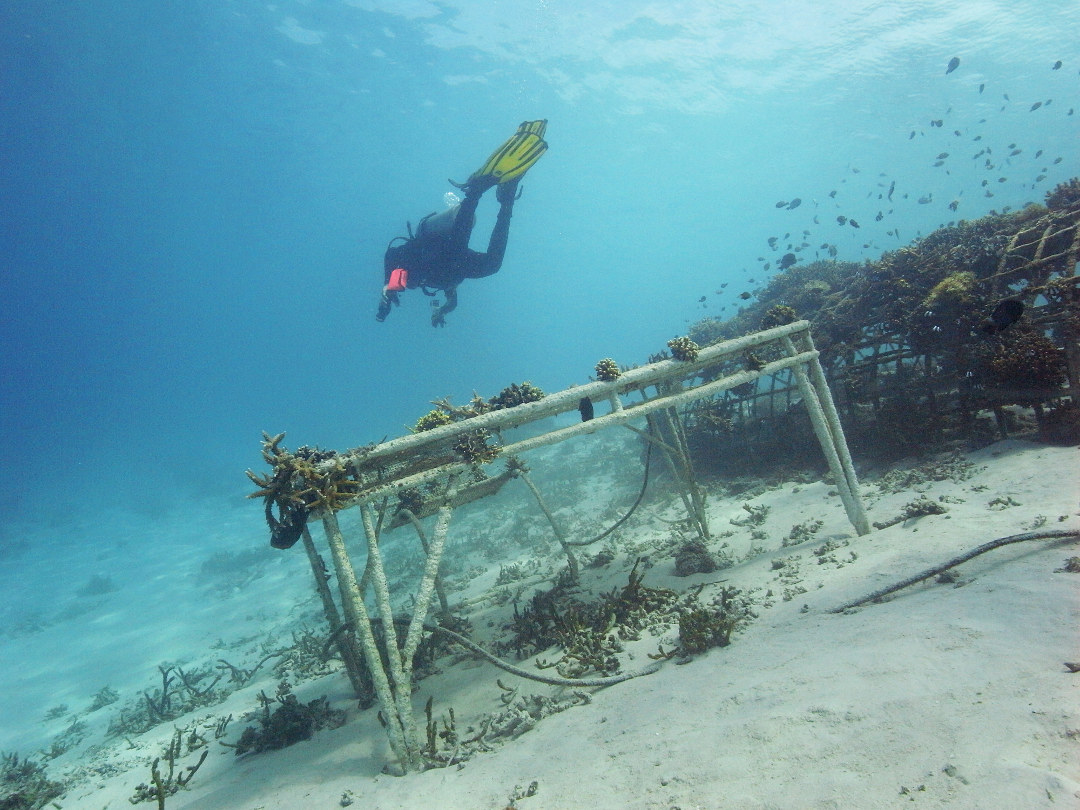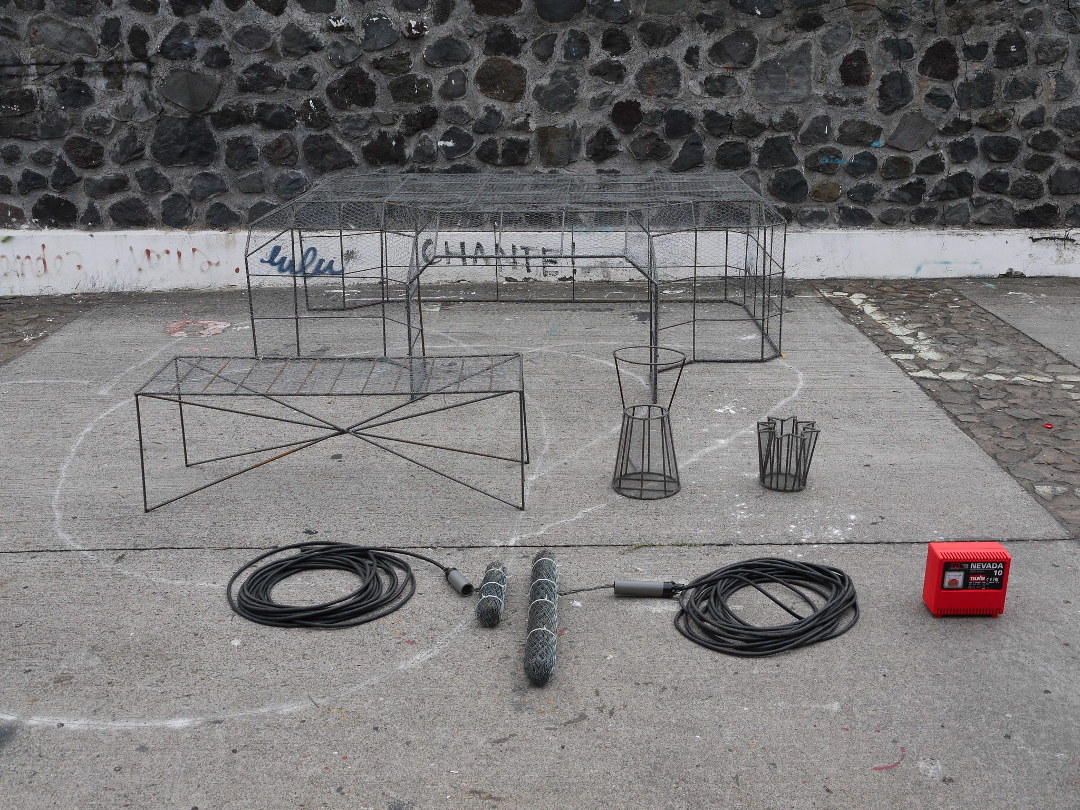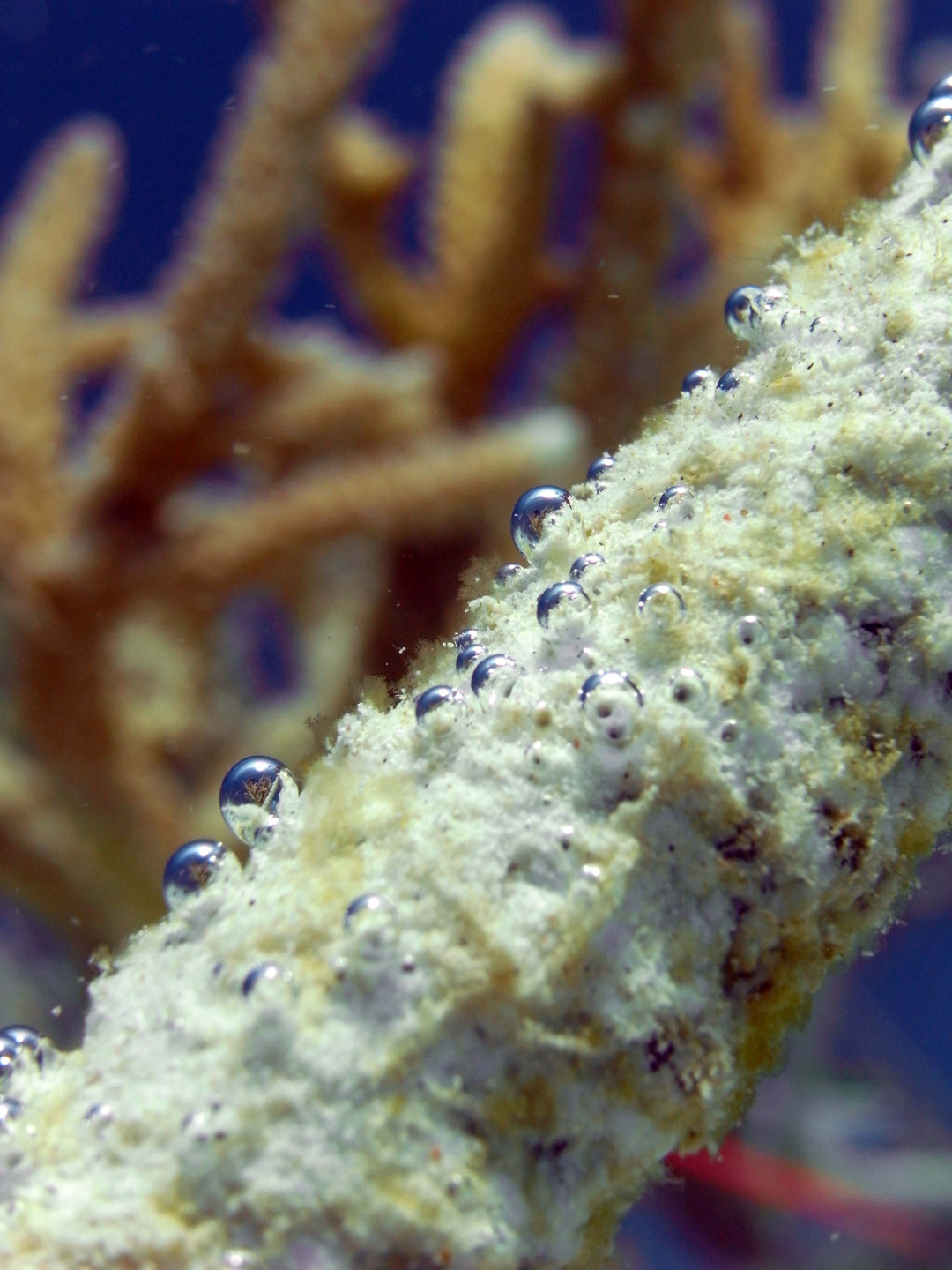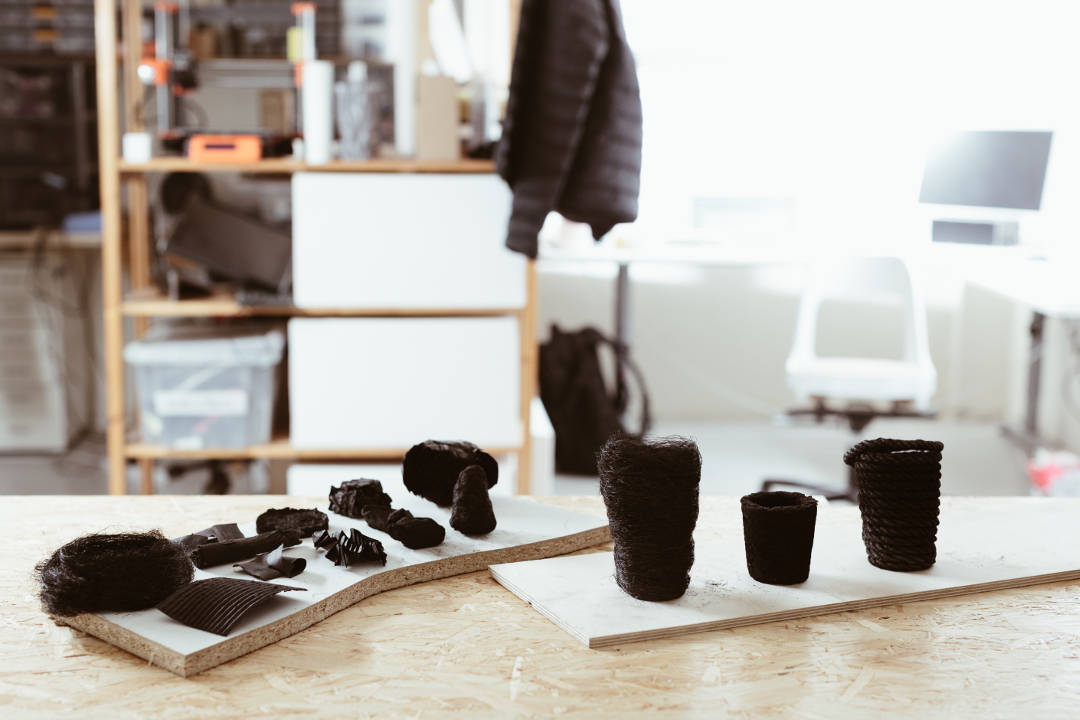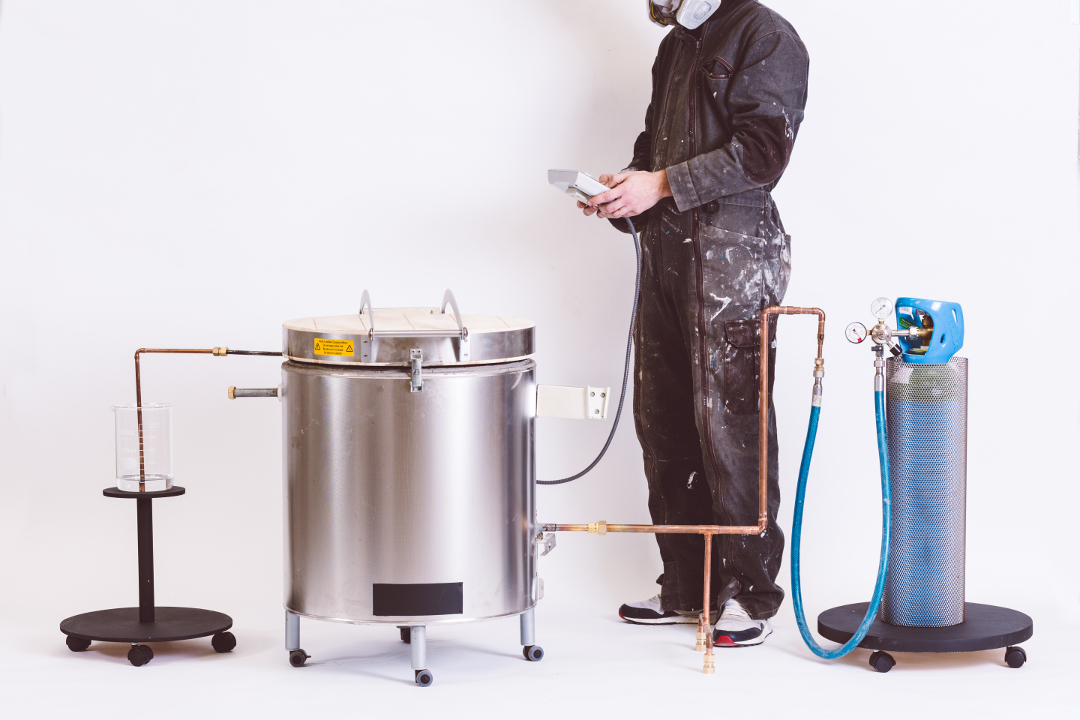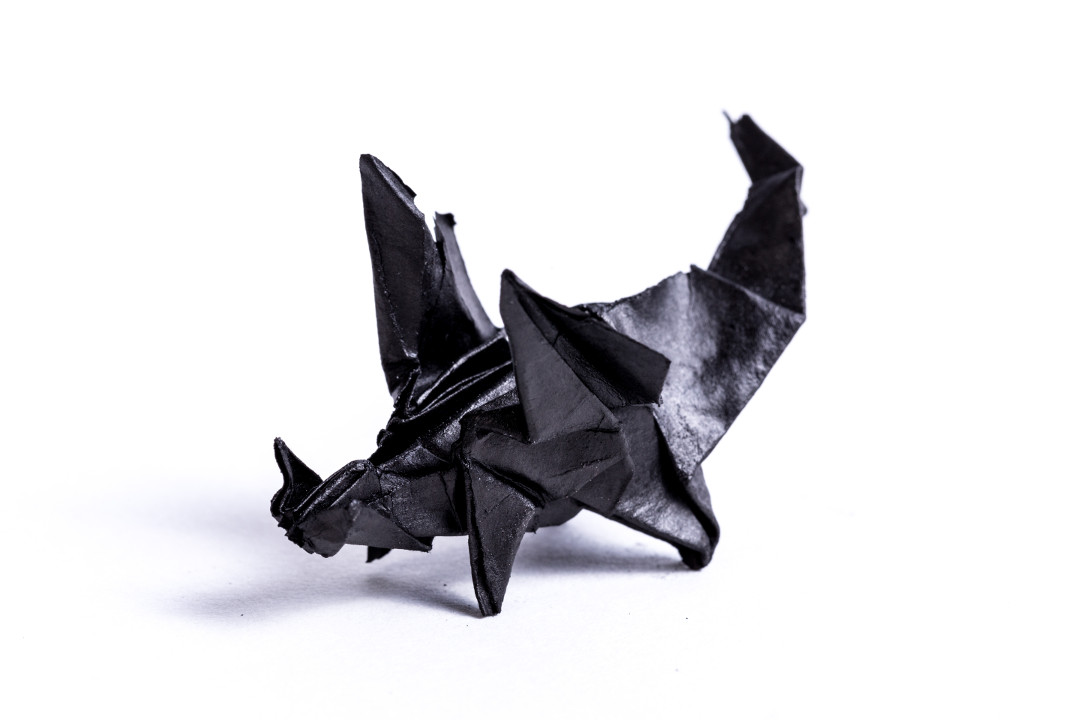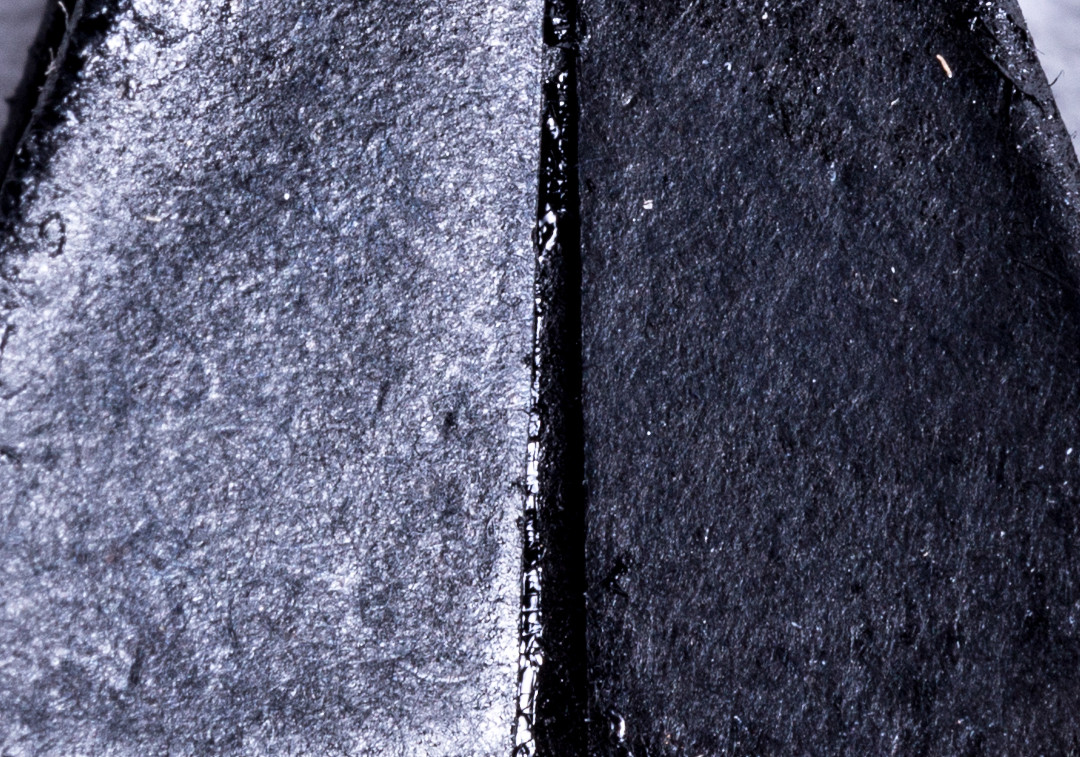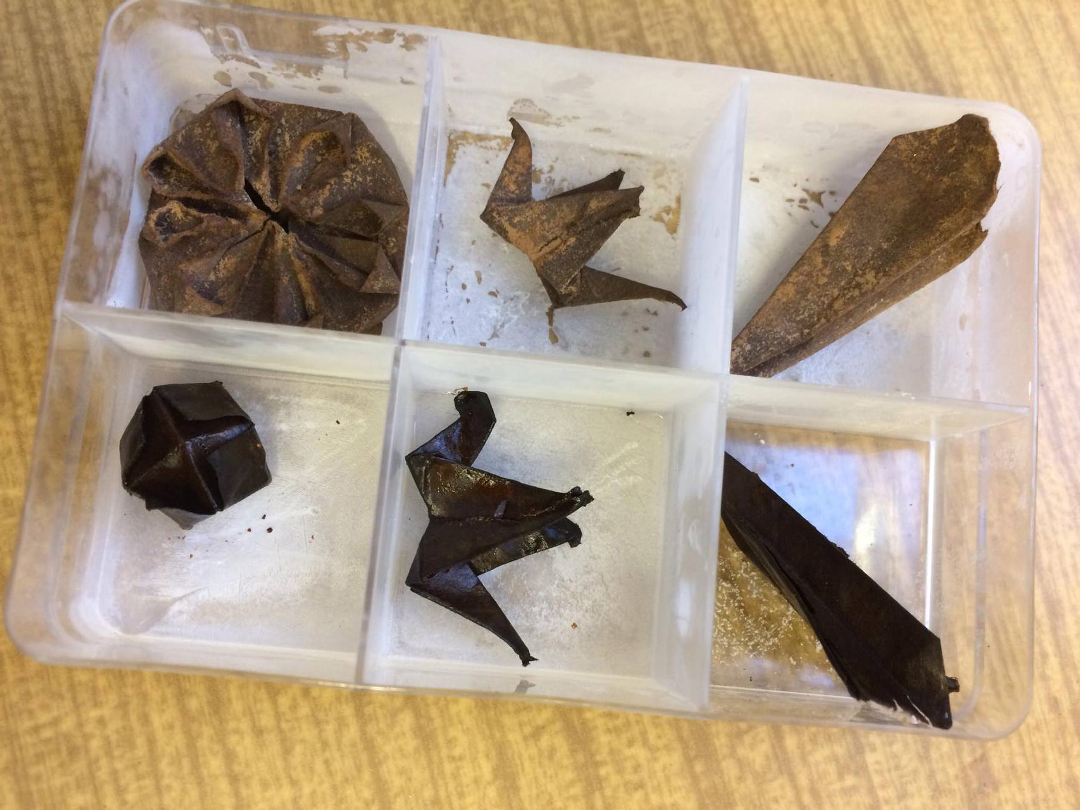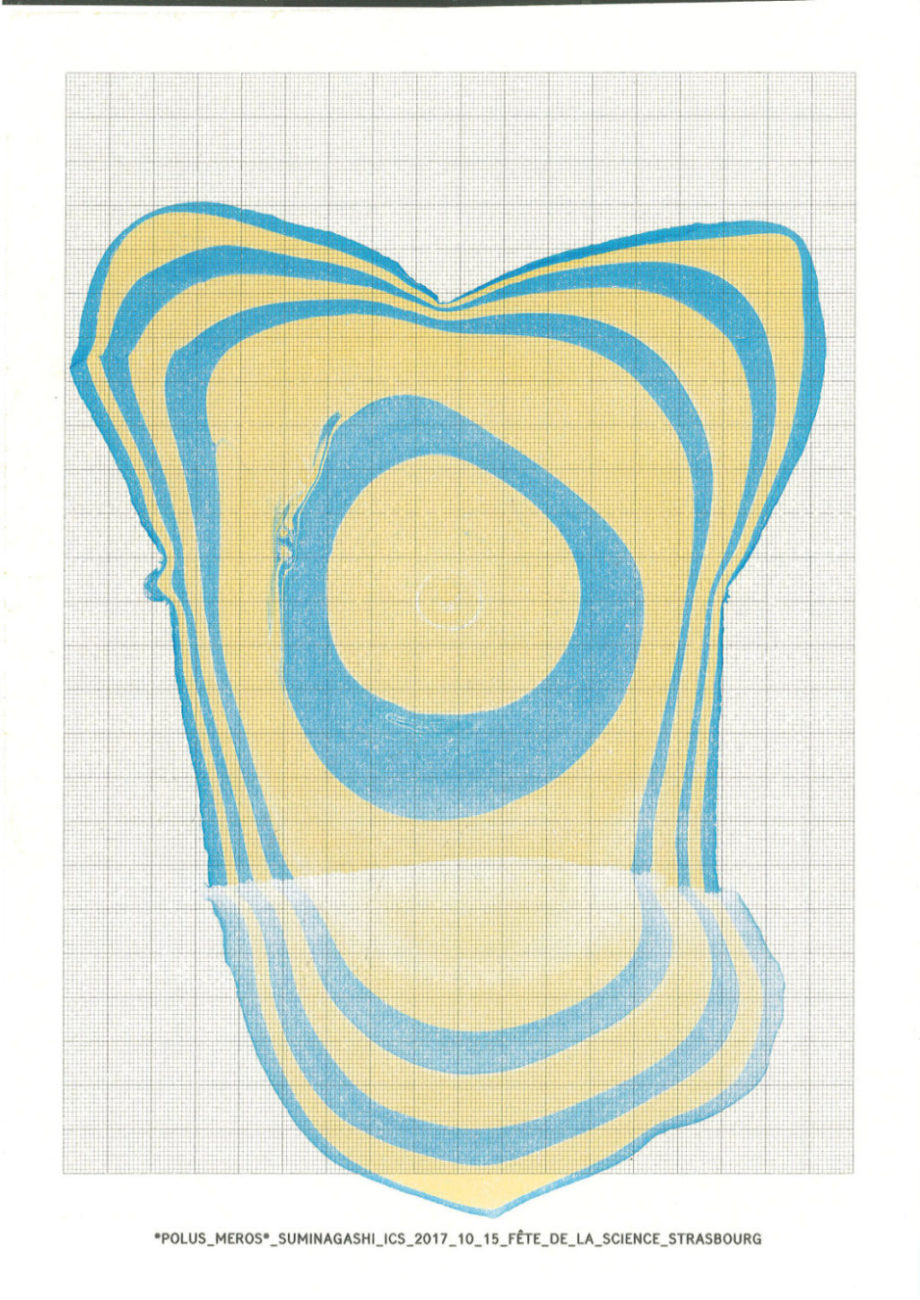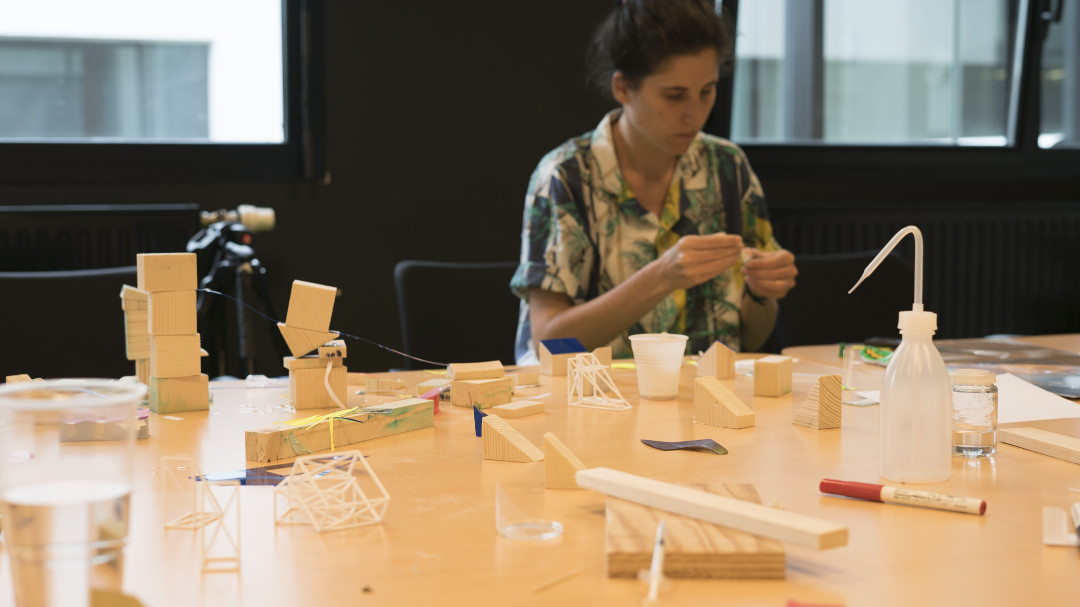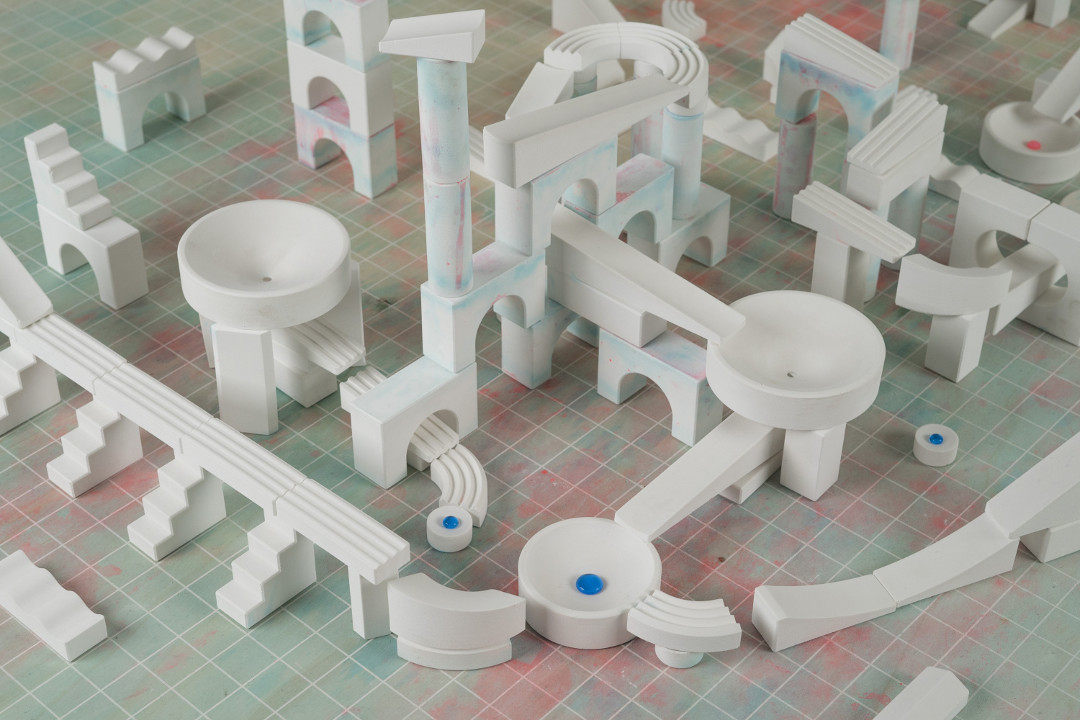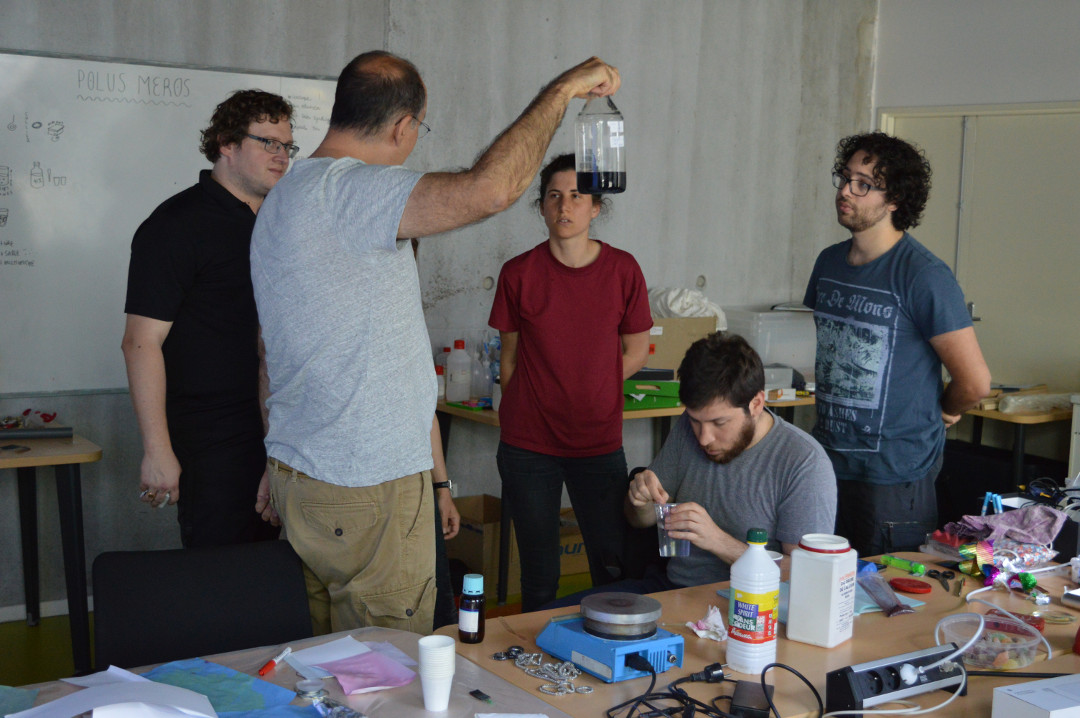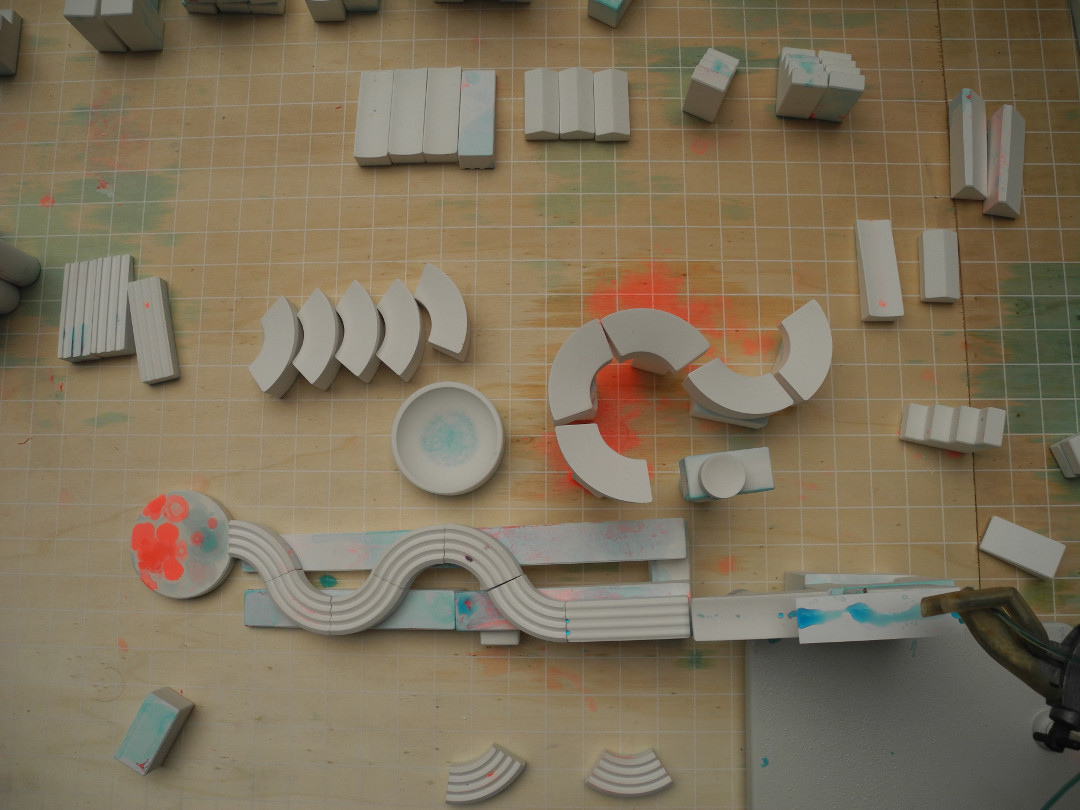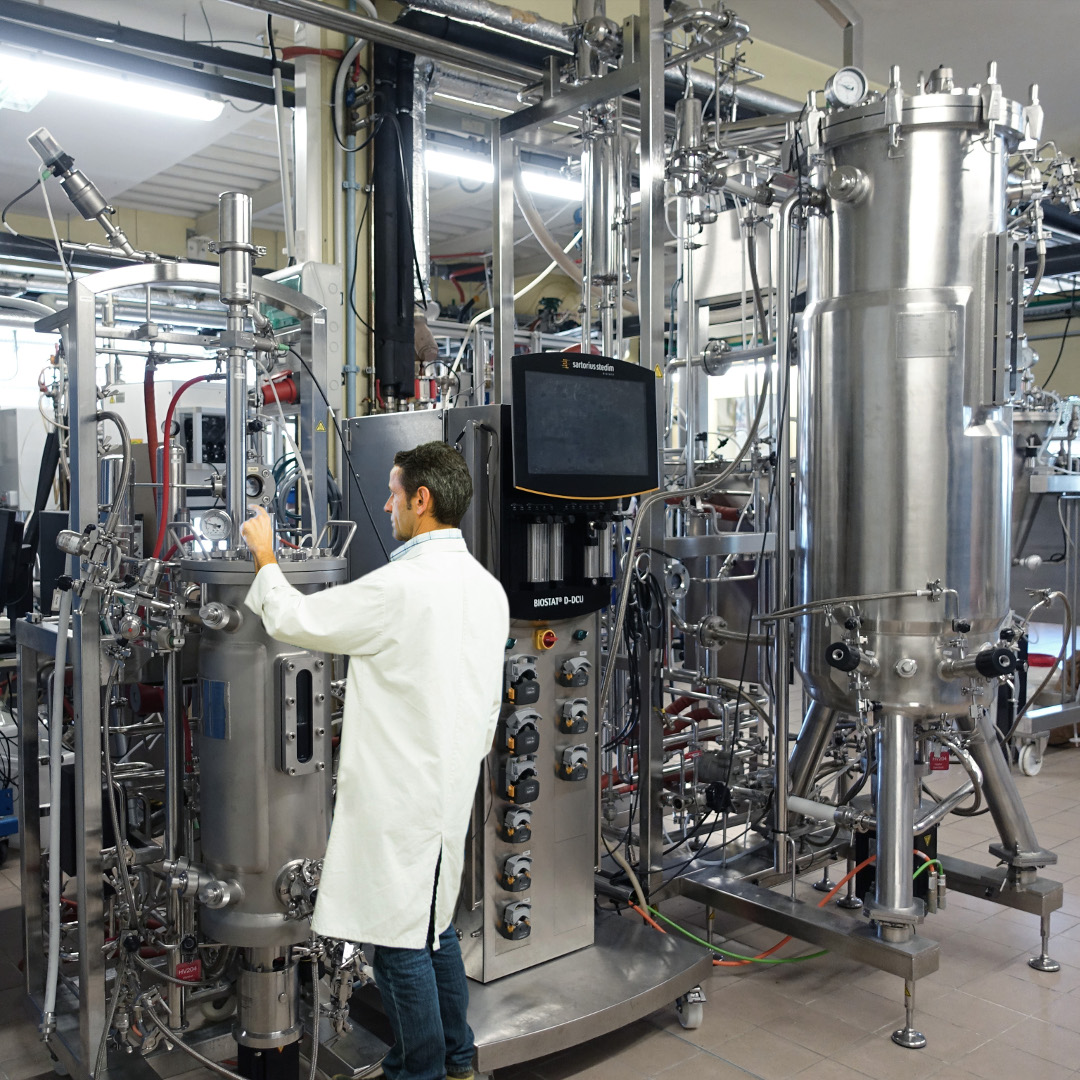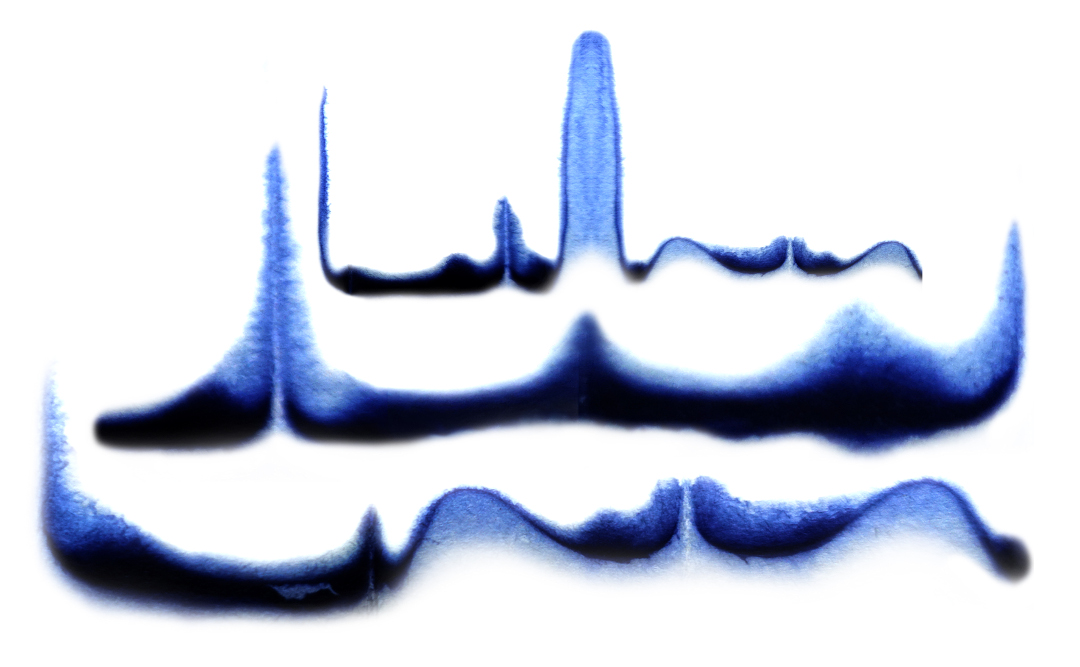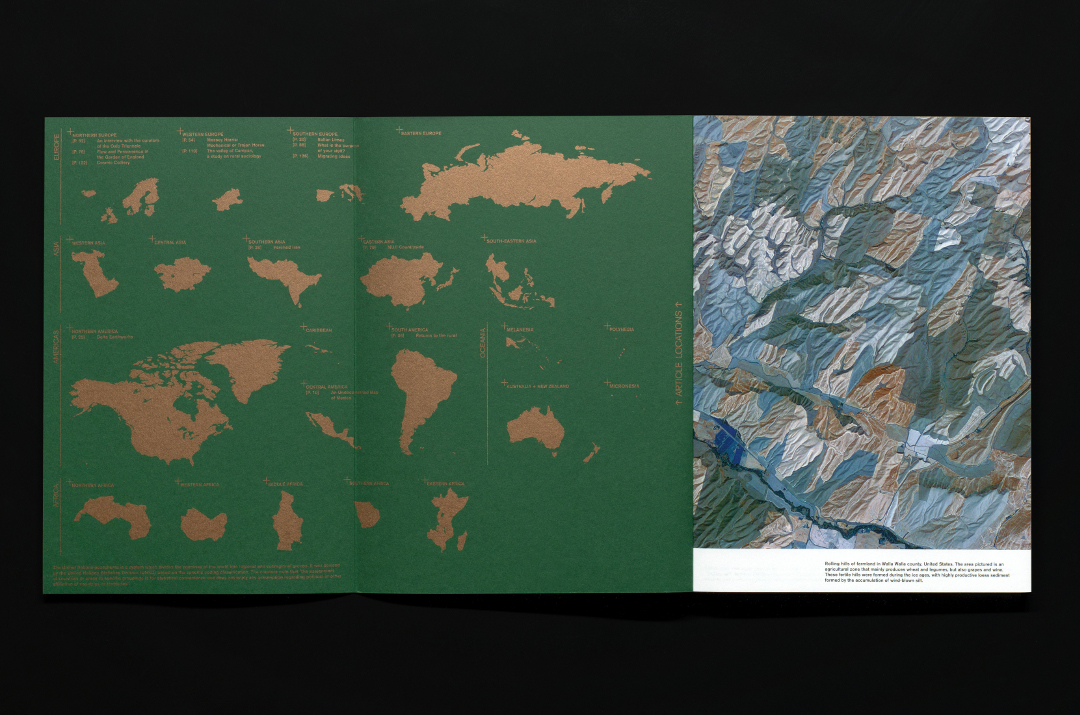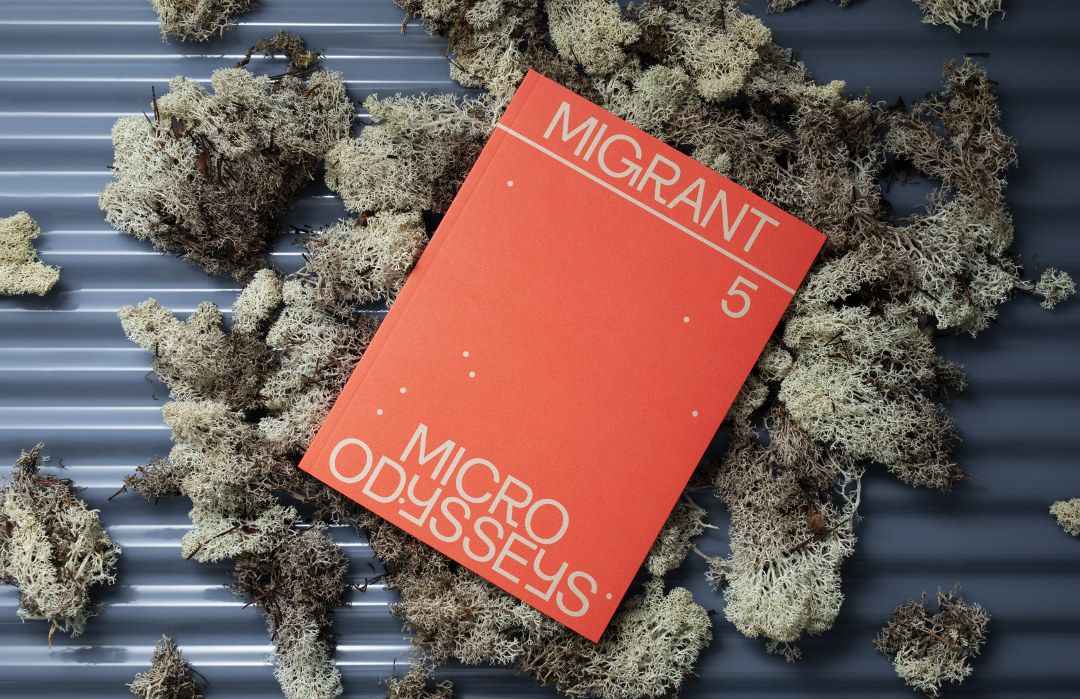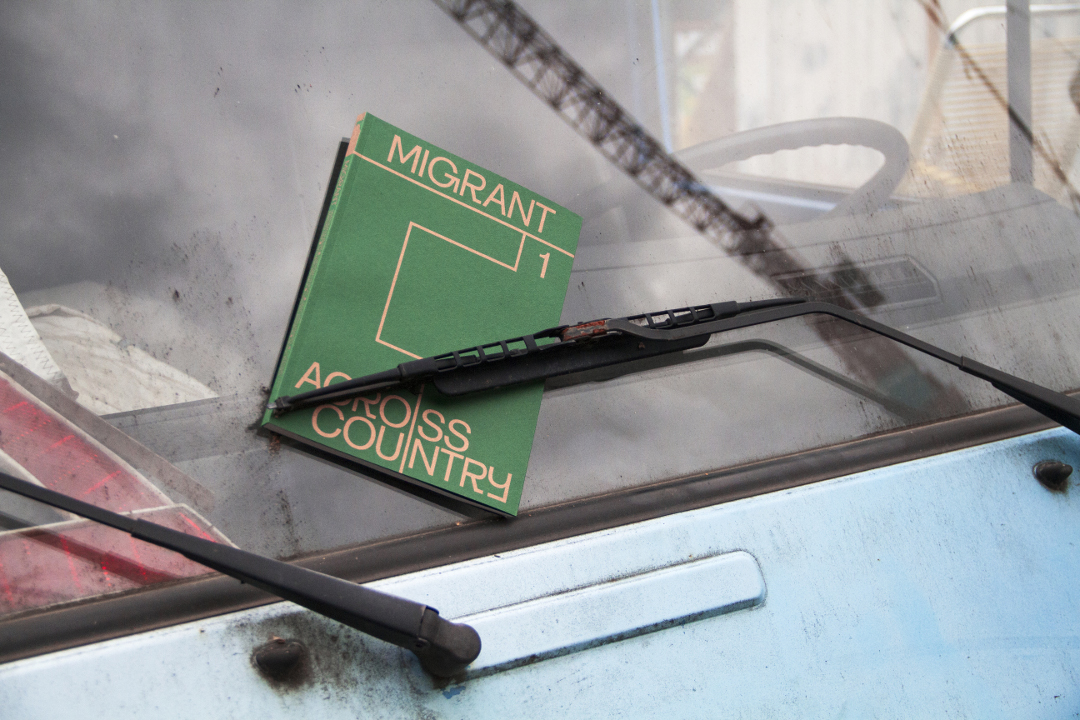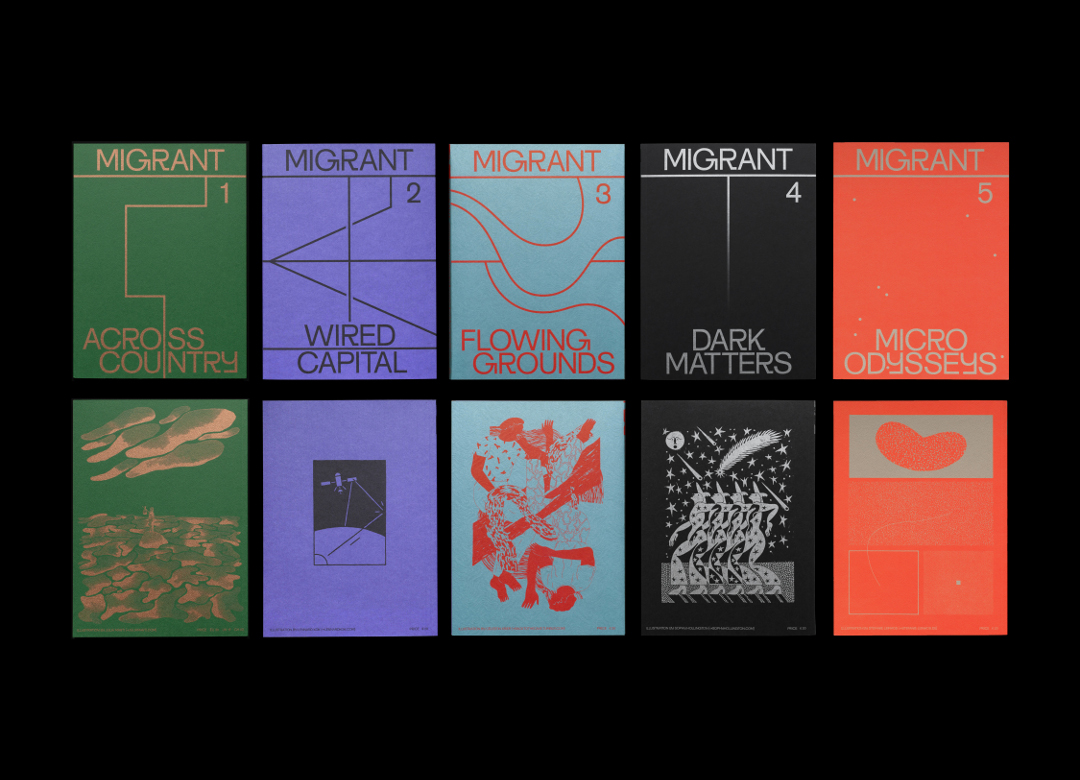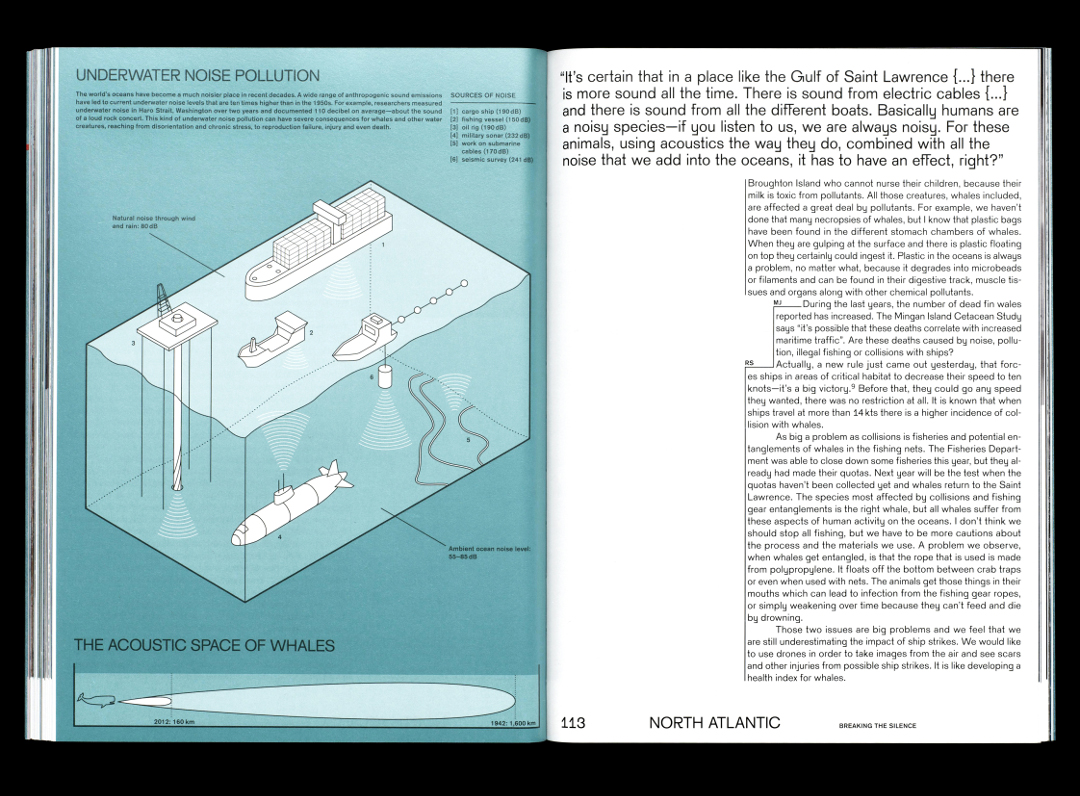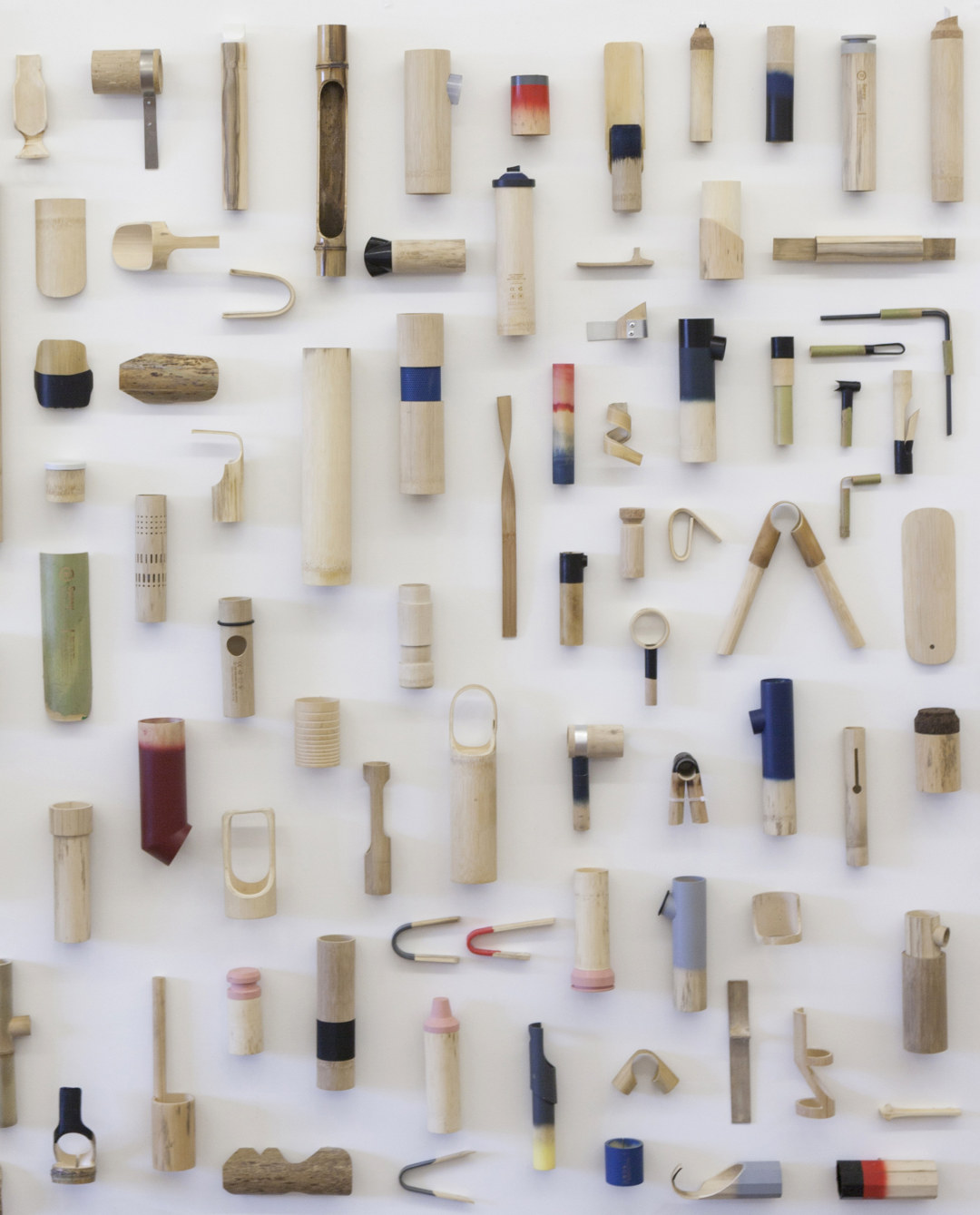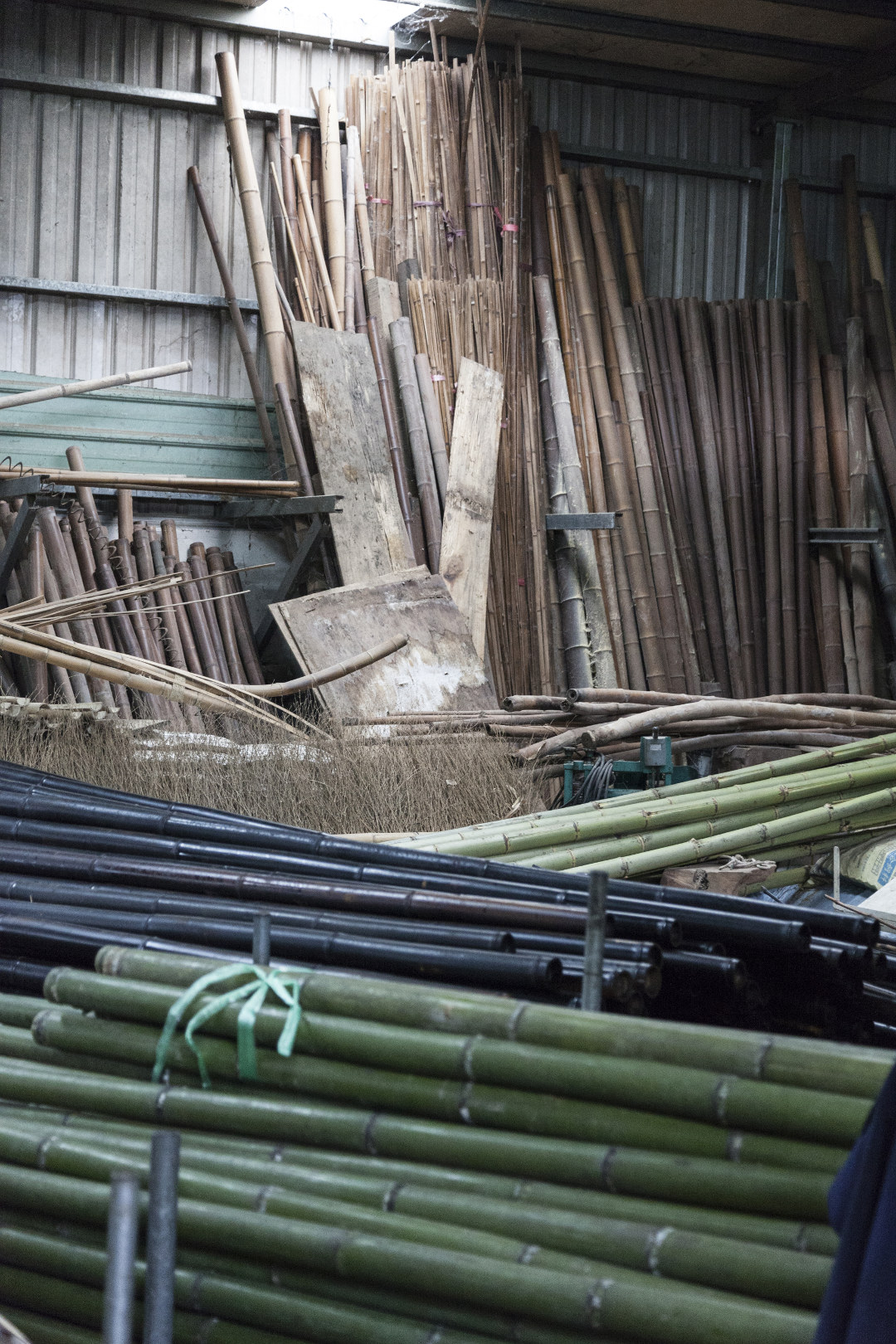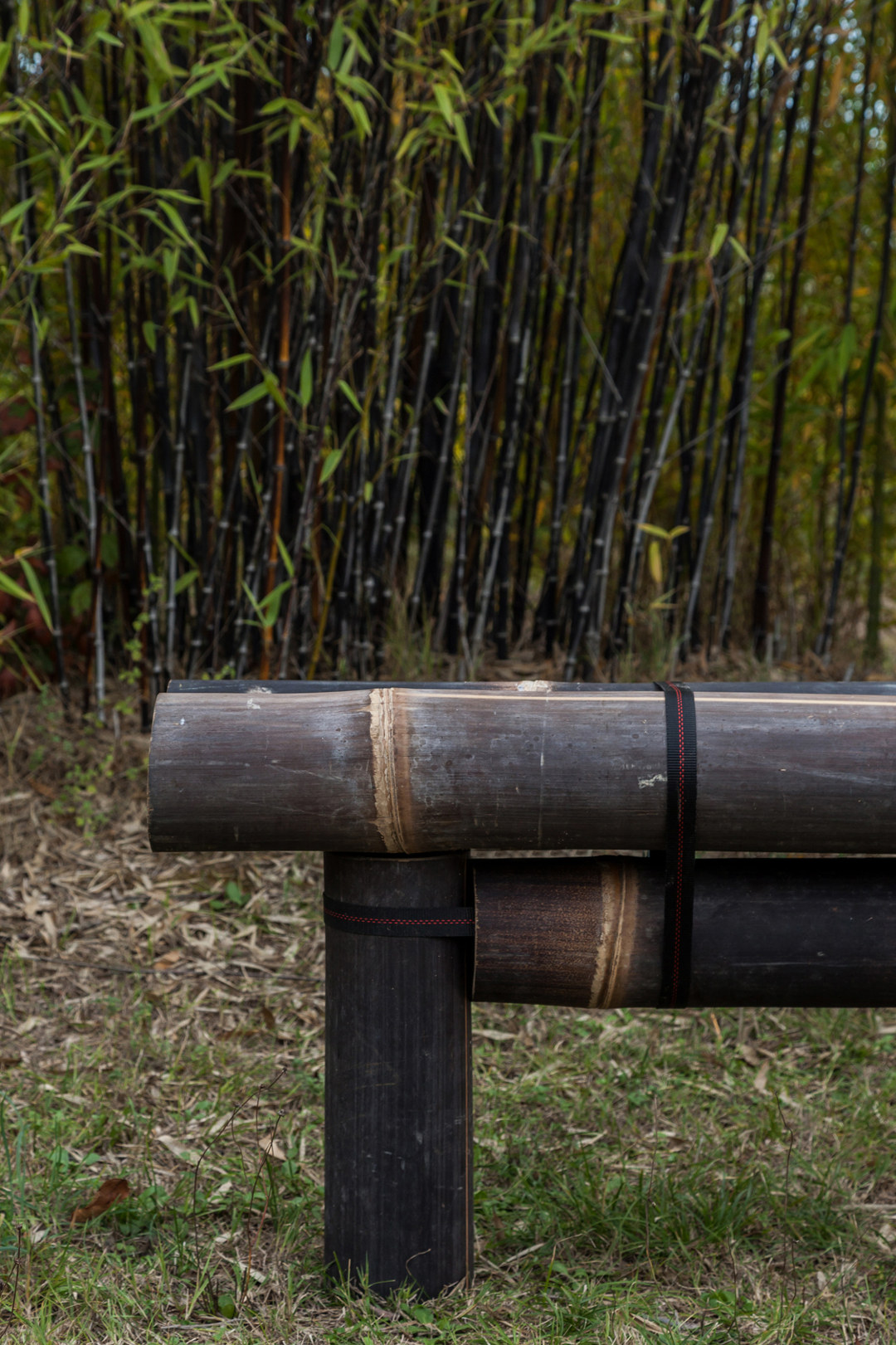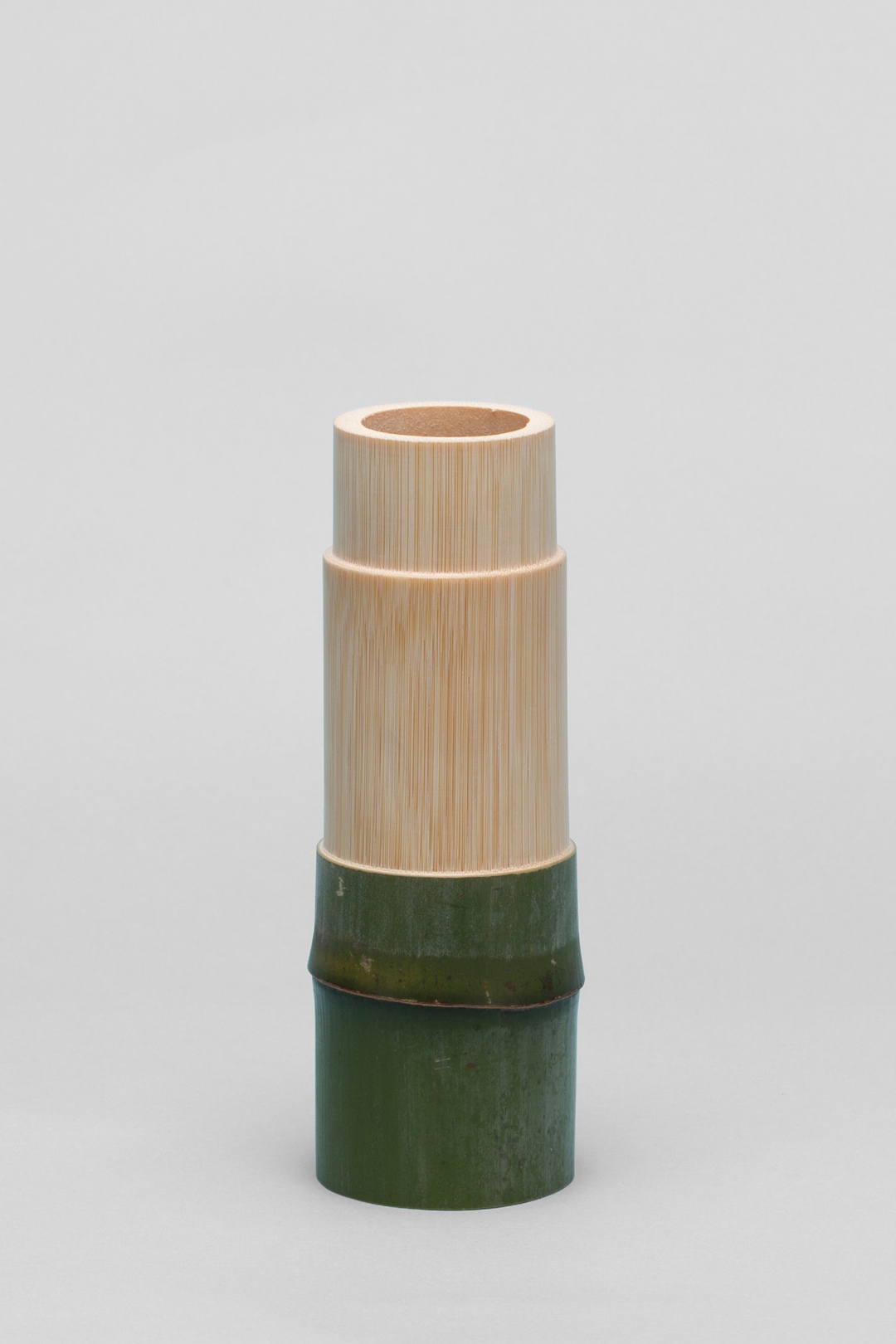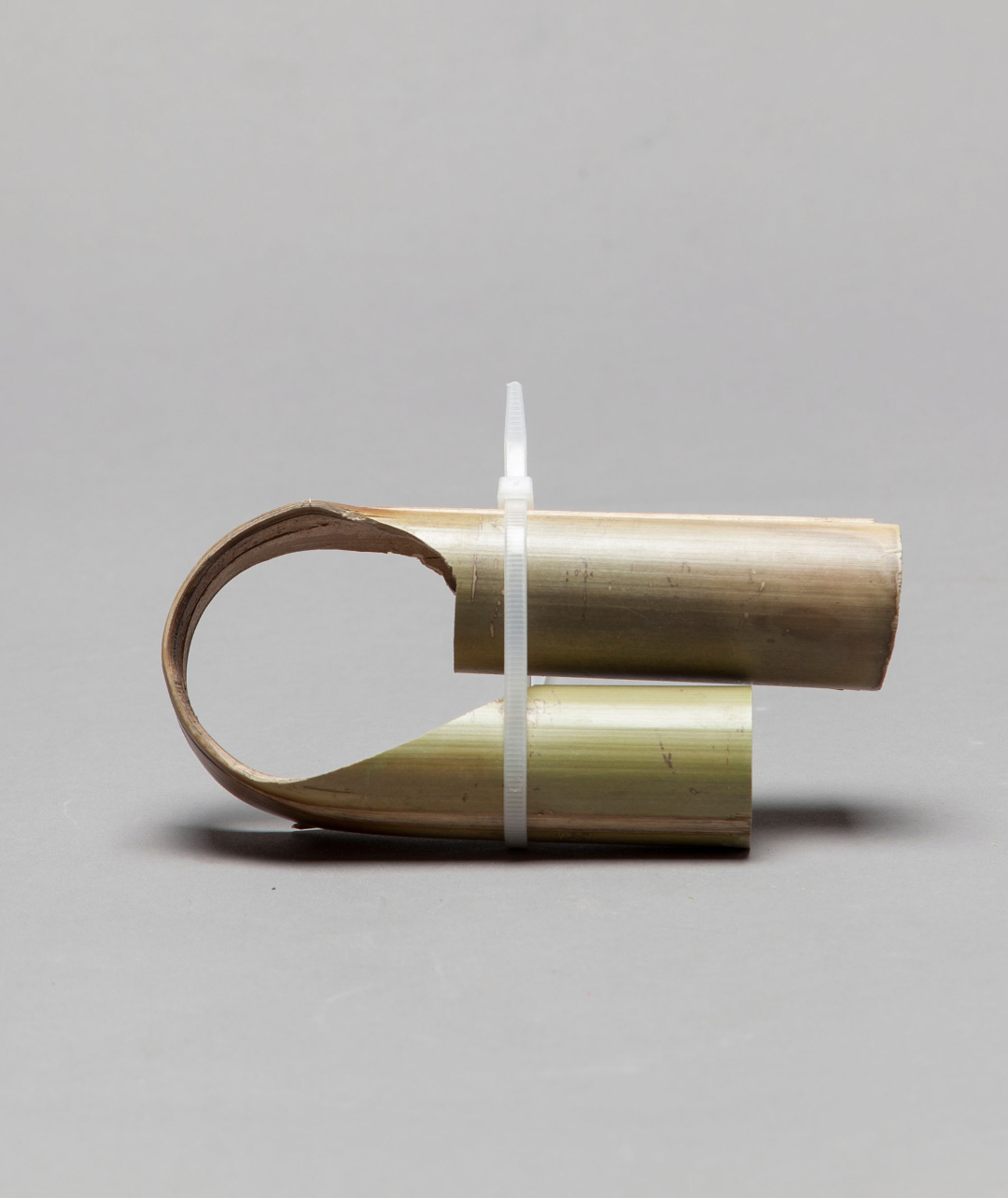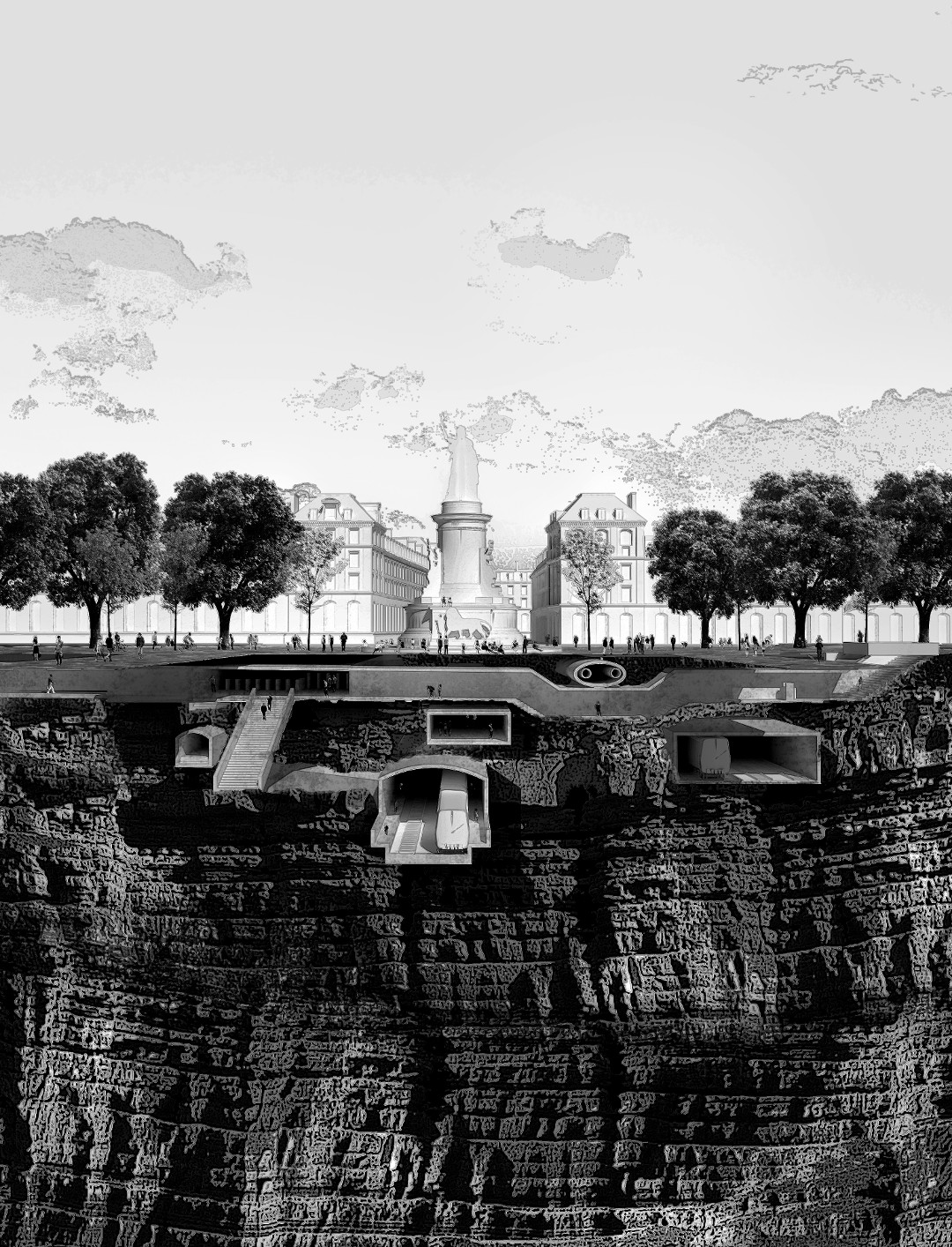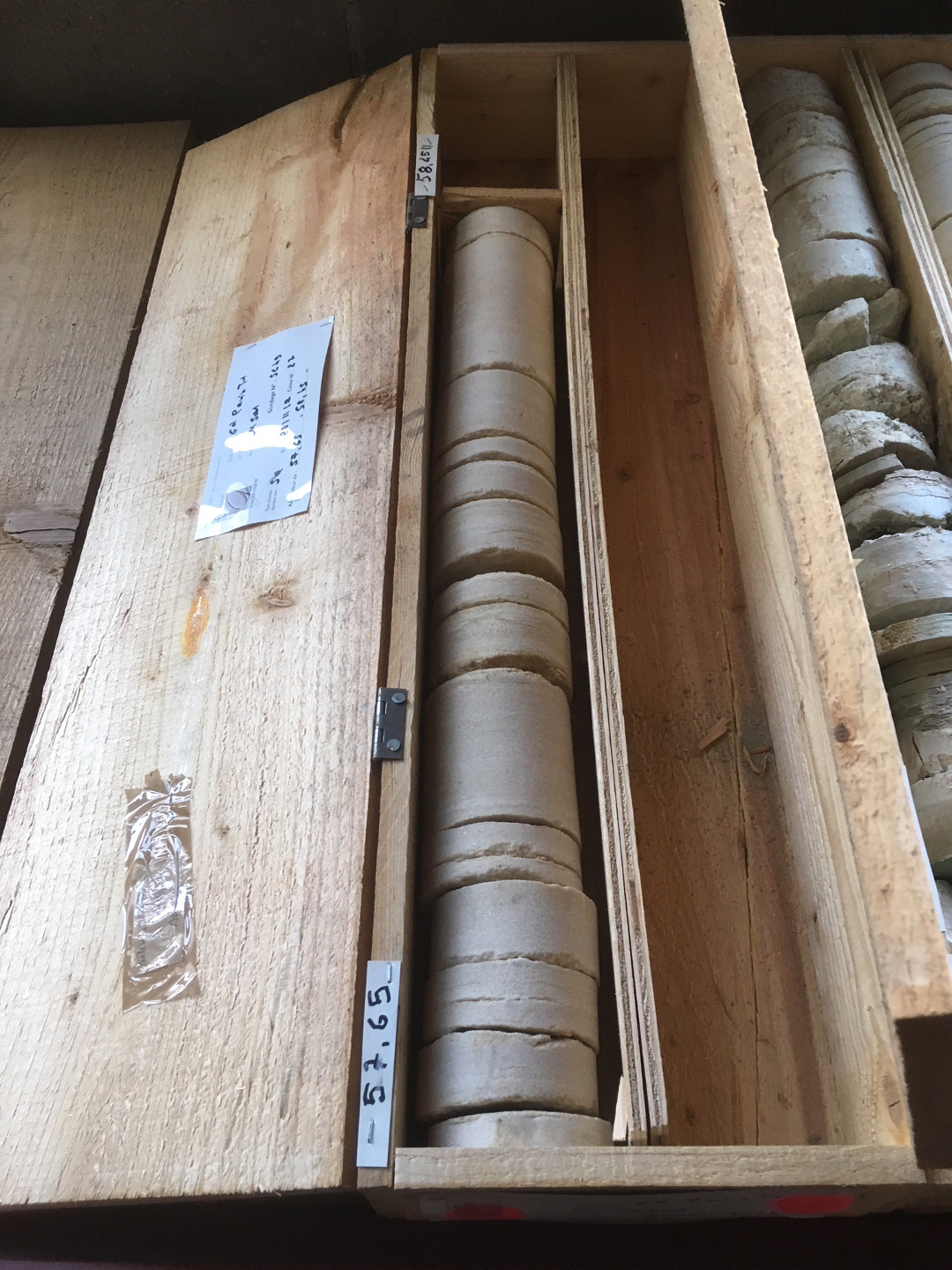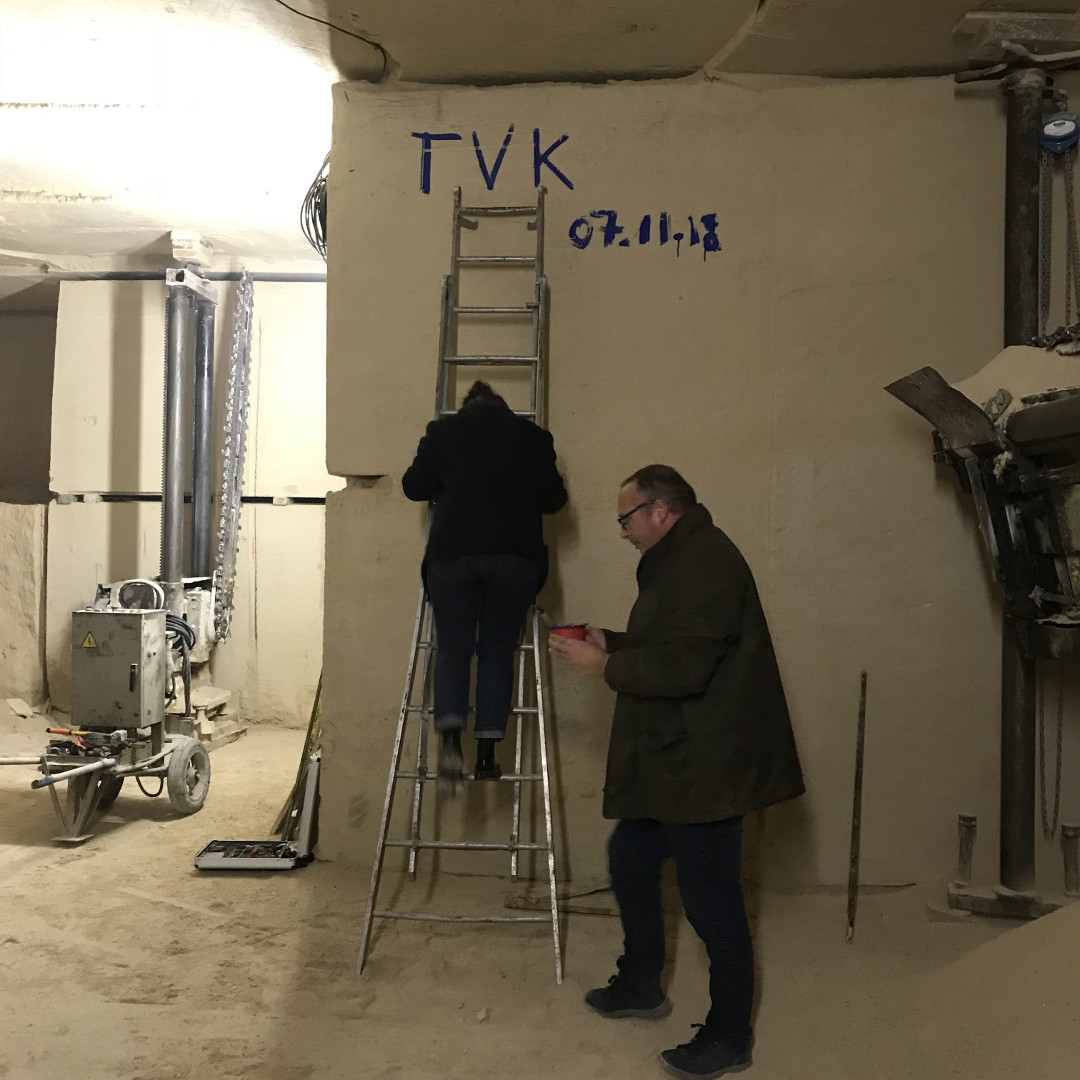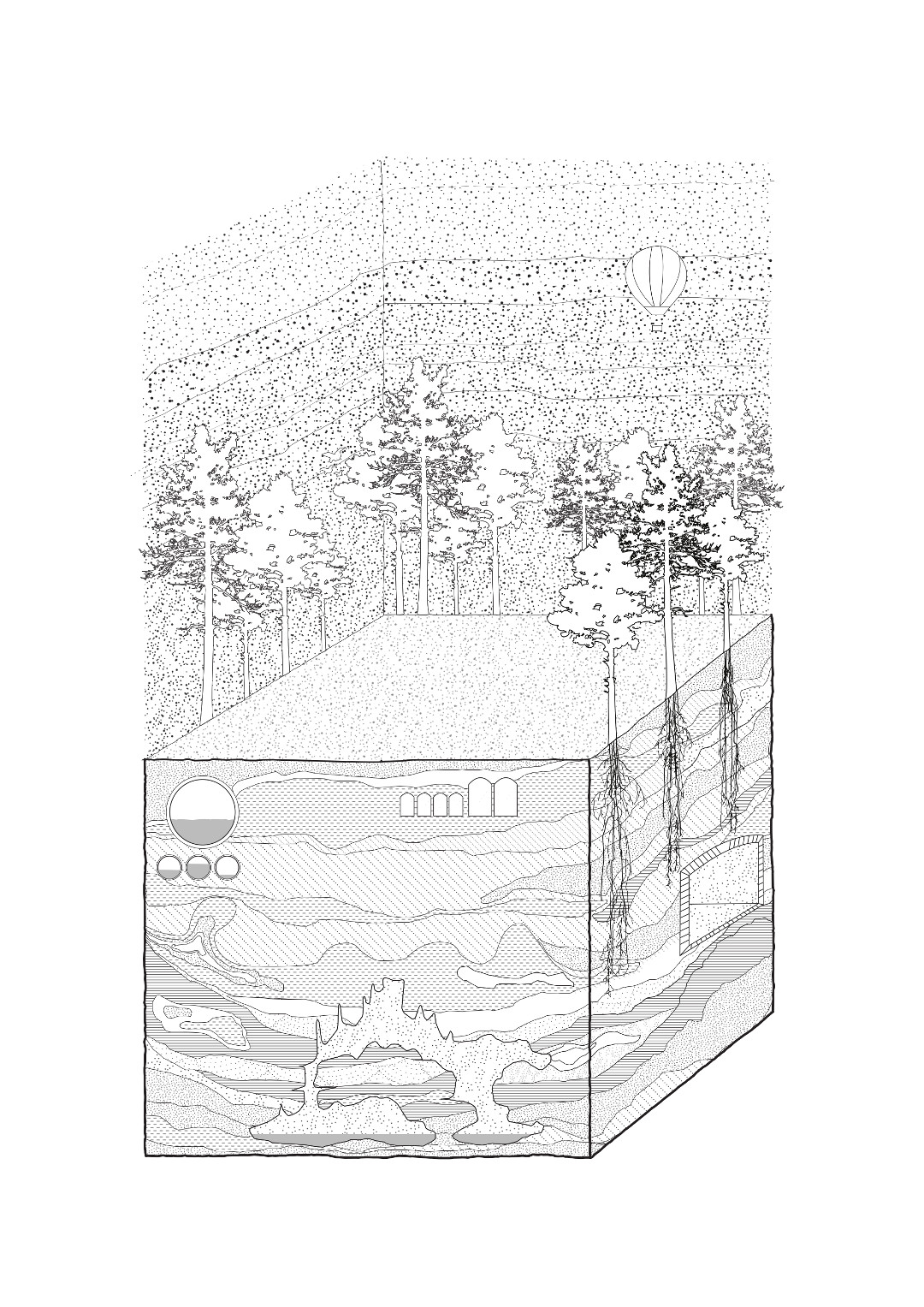Digital stories
2015 — ongoing
Astrid de la Chapelle is a french artist, film-maker and designer. Her projects, drawings, narrative and speculative films are built from a connectionist and undisciplinary point of view. For 163 km² she associated herself with the environmental consultant Pauline Briand and the graphic designer and programmer Sarah Garcin.
163 km² is an exploration of Rapu Nui through its invasive plants. Under the prism of vegetation, this project deploys a temporal and spatial panorama of Easter Island. By addressing the issues of growth and ground dynamics it questions the restoration of this same ecosystem to its « original » state. Rapa Nui is a laboratory where different territories and spheres: human, vegetal, animal, state and ancestral are superimposed, intertwined and hybridized.
According to these dynamics, the 163 km² project is composed of an internet platform that dialogues with drawings and objects. The navigation of the website, guided by an original algorithm, brings together images and heterogeneous documents that form constantly renewed and transversal narratives. This fractal view of a land emerged in the middle of the Pacific collides both past, present and speculated futures.
This project is the extension of a research initiated by Astrid de la Chapelle in 2015 that was mainly focused on vegetation and its link to many of the island’s contemporary issues. This following research, developed with the collaboration of members of the local Rapa Nui population, was then joined by designer and programmer Sarah Garcin and Pauline Briand, a journalist specialized in biodiversity issues.
The project is supported by a grant from CNC DICRéAM.
Data-visualisation
2015 — 2019
The designer David Bihanic examines the different paradigms of visualization and manipulation of large and complex datasets in order to building new avenues and opportunities for data design (data visualization aesthetics and creative informatics).
In 2015, an extreme climate variation in the United States was highlighted and analyzed by NASA-GPM (National Aeronautics and Space Administration’s Global Precipitation Measurement Mission) in collaboration with the Japan Aerospace Exploration Agency (JAXA). Indeed, many states throughout the east coast (the states of Kentucky, Illinois, Idaho, Louisiana and Texas) received immense amounts of rainfall over the first seven months of the year (2015), whilst other states along the west coast, like the state of California, underwent one of the worst droughts on record.
This phenomenon proves once again the seriousness of the threat of global warming to our planet. Scientist have concluded and constantly remind us that this really is something of concern. In order to grasp this phenomenon visually, David Bihanic has drawn this graphical reinterpretation using D3.js, based on a GPM-IMERG (a data processing method known as Integrated Multi-satellitE Retrievals) satellite-based precipitation dataset produced by the NASA-GPM. The vector field (which depicting the rains) is a dynamic conversion of the accumulated rainfall (from 0 to 5000mm) for the first seven months of the year 2015. The amount of rain is here proportional to the density of the vector field.
Experimentation of a technical process
2011— ongoing
David Enon, freelance designer, graduated from the ENSCI (École Nationale Supérieure de Création Industrielle – Paris) questions in his projects the production modes of material form in our environment.
Mineral Accretion Factory is an alternative production system of objects and furniture based on « Biorock » the artificial reef production process developed by architect Wolf Hilbertz (Symbiotic Process Laboratory) and biologist Thomas J. Goreau (Global Coral Reef Alliance) in order to restore coral reefs and seabed (fauna, flora).
The undersea immersion of a steel structure, that is in fact the object’s skeleton, connected to a low-voltage electrical supply, for example a solar panel or windmill, triggers a redox reaction allowing the object to self-generate, to produce itself with material created from the ocean’s minerals. M.A.F shows that it is possible to produce differently whist being embedded in a natural environment, simultaneously having a positive impact, in this case in contributes to coral reef restoration. This process uses basic apparatus and high scientific knowledge (low-tech + high-tech = wild-tech) in order to respect biological production cycles (slow-tech), effortlessly and costlessly.
Thanks to the support of the CN@P (Centre National des Arts Plastiques), the first prototype was set up in November 2012 off the island of Gili Trawangan (Indonesia). The development of the project is currently continued on La Réunion Island within the API (Art Paysage Insularité) research laboratory of ESAR (École Supérieure d’Art de La Réunion) in partnership with Kélonia, a research center on turtles. It is part of the emerging « wild tech » as defined by French anthropologists Emmanuel Grimaud, Yann-Philippe Tastevin and Denis Vidal.
Machine-tool and research
2015 — ongoing
Pétrification has been developed by Émile De Visscher, an engineer, designer and doctor of design, for the past 4 years as part of the SACRe research program at the University of Paris Sciences et Lettres and the École nationale supérieure des Arts décoratifs, in partnership with Chimie ParisTech and Le Collège de France. Through both design, engineering, material sciences, but also critical writing and curating, he explores the different ways technologies and techniques relate to each other and interact.
Petrification is a new manufacturing process that allows the transformation of cellulosic materials (paper, wood, cardboard, paper pulp, rope, plants, etc.) into rock. It transmutes these materials from organic to inorganic. In this sense, it paves the way for an innovative and accessible ceramic craft, based on shaping techniques known to all. But, by passing from plant to stone, from the living to the non-living, from artificial to a constituent material of the earth’s crust, the process has an equally symbolic significance. It seeks to replay and carry myths, fantasies and science-fiction novels on our relationship with the perennial and the perishable. Petrification has always summoned, in many cultures, the imaginary of trace, statues – to death, fault or survival – in Greek (Medusa), Celtic (Dolmens), Kasua (petrifying spirits) mythologies and narratives as well as in the Bible or the Tales of the Thousand and One Nights.
Petrification is also one of the key processes of archeology, and producing contemporary and fast petrified artifacts resonates with the Anthropocene: what trace will we leave after our extinction?
Dissemination of research – mediation device
2018
Raphaël Pluvinage’s work unveils the social, aesthetic and political implications of contemporary technological systems. As a graphic, product and set designer, the core of the explorations of Juliette Gelli deals with making technomagic more tangible. Finally, Wiebke Drenckhan is a German physicist working for the CNRS
They have designed and developed Water Tower together during a residence at the Institut Charles Sadron (ICS), CNRS (National Centre of Scientific Research), Strasbourg, France.
A functionalised surface is a surface that has been engineered to interact with its environment in response to defined triggers, through an invisible modification of its structure and texture. For instance, a superhydrophobic surface is one made extremely difficult to wet: a microscopic grainy texture minimises droplets adhesion and lets water run in bouncy pearls, like on a lotus leaf.
Water Tower is a construction set for creating water droplet circuits. The plaster bricks are covered with a superhydrophobic polymer — a phenomenon called “lotus effect” — on which drops of water slide. Turns, grooves, loops: combining the different blocks enables the player to create his own path, and to challenge a physical phenomenon that is invisible to the naked eye. Born through a collaboration between designers and researchers, this interactive display is a surprising mediation tool, that makes some of the ICS’s research topics on polymeric materials accessible to a broader audience. The first circuits were built during the Fête de la Science 2017 in Strasbourg.
Biotech project
2015 — ongoing
Marie-Sarah Adenis is a designer and the creative director and cofounder of a biotechnology enterprise: PILI, that develops new production technologies for renewable colorants based on the fermentation of microorganisms as opposed to petrochemical colorants.
Since 2015, PILI has been devoted to creating the first ever Color cell factories. Up until now, humans had tried everything: they made colors with plants, animals, minerals, and even fossil resources like petroleum. Most dyes today are made from petroleum, with catastrophic results in terms of energy use and pollution of ecosystems. Living things, however, don’t rely on petroleum to efficiently manufacture color. Microorganisms are the experts in this field, and Pili is working with them to develop a new generation of environmentally friendly dyes, in order to leave behind the era of petrochemical dyes once and for all.
Microorganisms transform matter in a clean and efficient way thanks to their enzymes. Fermentation allows microorganisms to break down renewable plant-based matter like sugar or wood, to then reshape it into dyes. Paradoxically, while this process is at the very heart of a biotechnological revolution, it is in fact very old: our ancestors were already using fermentation to brew beer, for example. At the beginning of the 21st century, PILI brings together biology, chemistry, and design, applying the ancestral craft of fermentation to modern biology, in order to brew color on an industrial scale. This method has a reduced energy balance since the enzymes in these microorganisms work at room temperature, without toxic solvents, and using far less water and energy than petrochemical processes. But it first required humans to become inquisitive and involved in order to combine the power of biological mechanisms with the genius of human undertakings.
Edition
2016 — 2019
Justinien Tribillon, is an urbanist, writer and editor based in London and Paris. He is editor and co-founder of Migrant Journal with Offshore Studio a Zurich-based design studio composed of Isabel Seiffert and Christoph Miler; Dámaso Randulfe, an artist, architect and writer based in London; Michaela Büsse a PhD candidate at ECAM and a Junior Researcher at the Critical Media Lab in Basel.
Migrant Journal is a six-issue publication exploring the circulation of people, goods, information, fauna and flora, around the world and the transformative impact they have on space. While migration is part of humanity’s genesis, it seems the phenomenon has become ubiquitous, happening faster, with complex ramifications.
Migrant aims at exploring the relationship between these elements, events, journeys and spaces bound under the idea of ‘migration’ in all its forms, crucial to understand today’s society.
In order to break from the prejudices and clichés of migrants and migration, Migrant asks artists, journalists, academics, designers, architects, philosophers, activists, photographers, citizens to rethink our approach to migration and critically explore the new spaces it creates.
Research, operation and production process
2015 — ongoing
Samy Rio has a dual background of cabinet making study and industrial design attending Ensci (Ecole Nationale Supérieure de Création Industrielle). Allowing him to combine industrial and artisanal skills, that he sees as being complementary and interdependent.
This project aims to question current industriel production modes through a research on bamboo, a sustainable material with multiple properties. Industry has reduced its use to the forms of slats or planks recomposed from split bamboo. Proposing a productive alternative by the industrialisation of bamboo under its natural tubular form, in order to create semi-products and products is one of the main goals of this applied design research, extending industrialisation to the guarantee of quality and material precision and not solely as the unique possibility of mass production.
Bamboo, a material that is perceived as being increasingly necessary in ecological transition, occupies too small of a role in industrial production. It seems foremost essentiel to question the current state of its utilisation in order to determine the place it occupies culturally in the territories it originates from. How can it evolve towards new typologies of objects, new uses and new approaches? Through researching methods and processes from both crafts and industry, we will be able to use its full potential, to modernize it without distorting it.
Its tubular shape allows us to rethink design production as a whole by questioning a product’s rollover along with the docking of the technical organs that compose it and the structural constitution of semi-finished materials designed in a controlled and sustainable life cycle logic for other artefacts.
Research, plans, sections
2015 — ongoing
TVK is an international office of architects and urban designers, created by Pierre Alain Trévelo and Antoine Viger-Kohler in Paris in 2003. TVK conducts strategic research on the major themes conditioning the design of the planet. This research is open and collective. The complexity and instability of urgent issues are therefore included.
There is a striking paradox in the fact that, from that which is called architecture, commonly designing the world of buildings, the ground is excluded, in that the very area in which man has produced the most architecture – one could say that man has most “architectured”—in the course of his history, is precisely the ground itself. The word architecture has become extraordinarily partial and reduced, performing a self-mutilation by separating these two worlds. Besides the growing separation between the realm of buildings and that of the ground, architecture today is not only shrinking, but is also detaching itself from the planet that hosts it.
It seems essential to us, on the one hand, to draw attention to something that is currently overlooked, the ground, and on the other to anchor this fresh attention in an unprecedented awareness of the fact that the ground is constructed.
The ground is generally considered as a membrane. This is the visible part and the surface of exchange between two inextricably linked layers: a medium comprising a material part (telluric) and an airy part (atmospheric). It is an experienced twofold layer, and its surface, like a facade, is the threshold that permits these exchanges. Historically, humans have constructed this layer, in the sense that they have sought to render the Earth habitable. The architecture of the ground represents the manner in which humans have relentlessly transformed the Earth’s crust by remodeling it.

